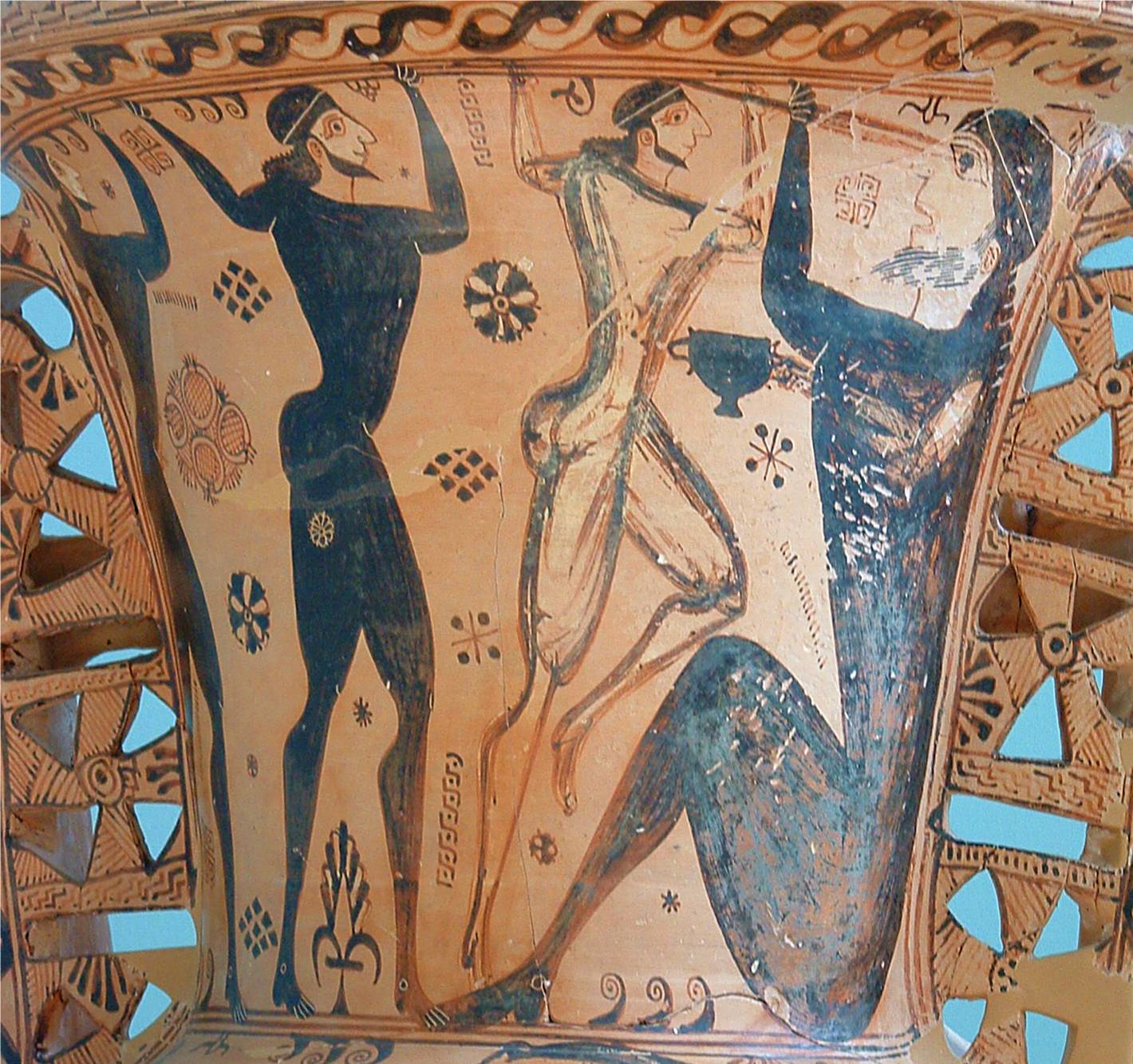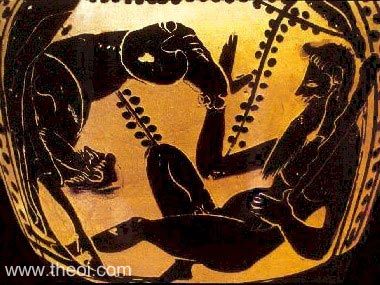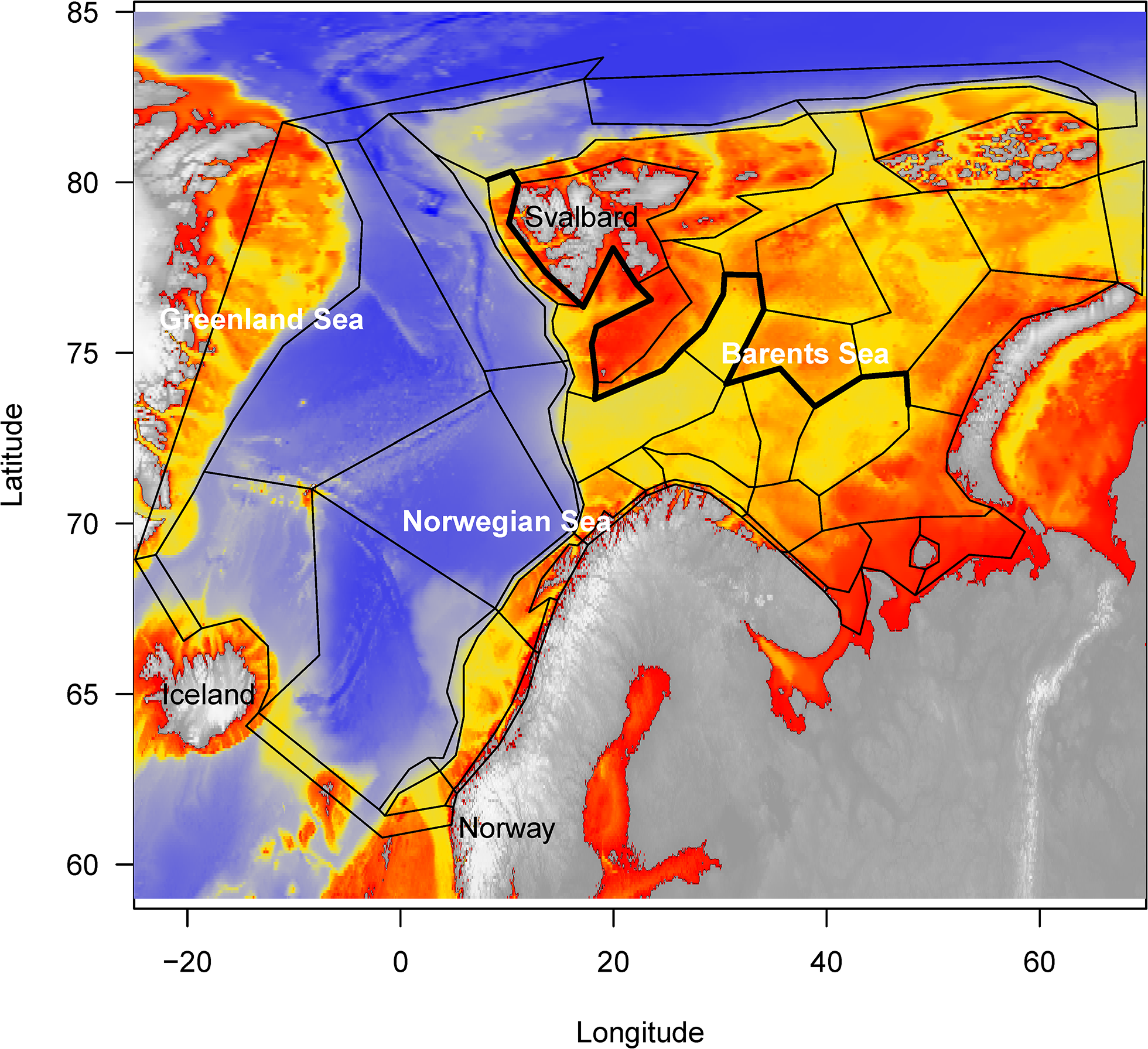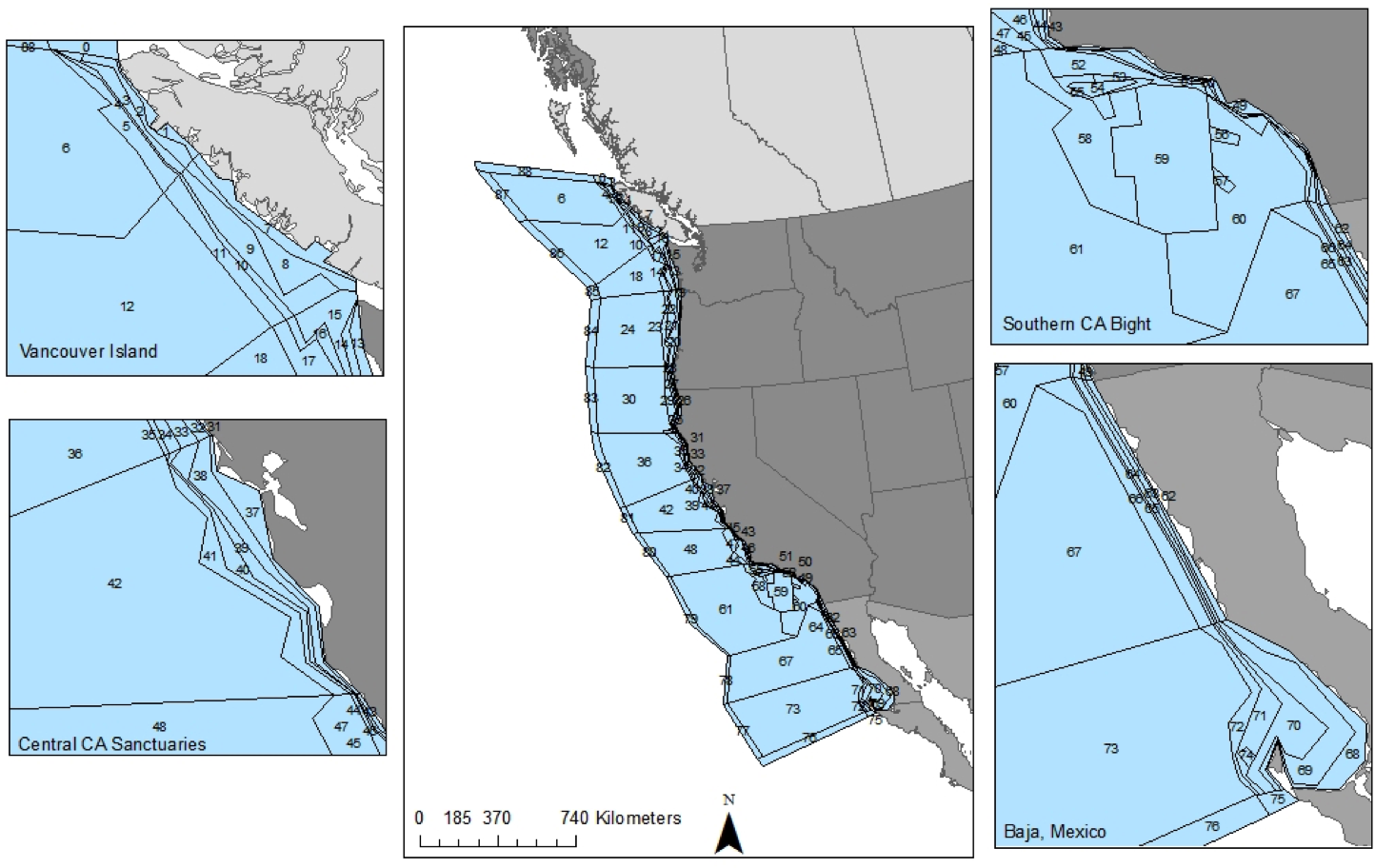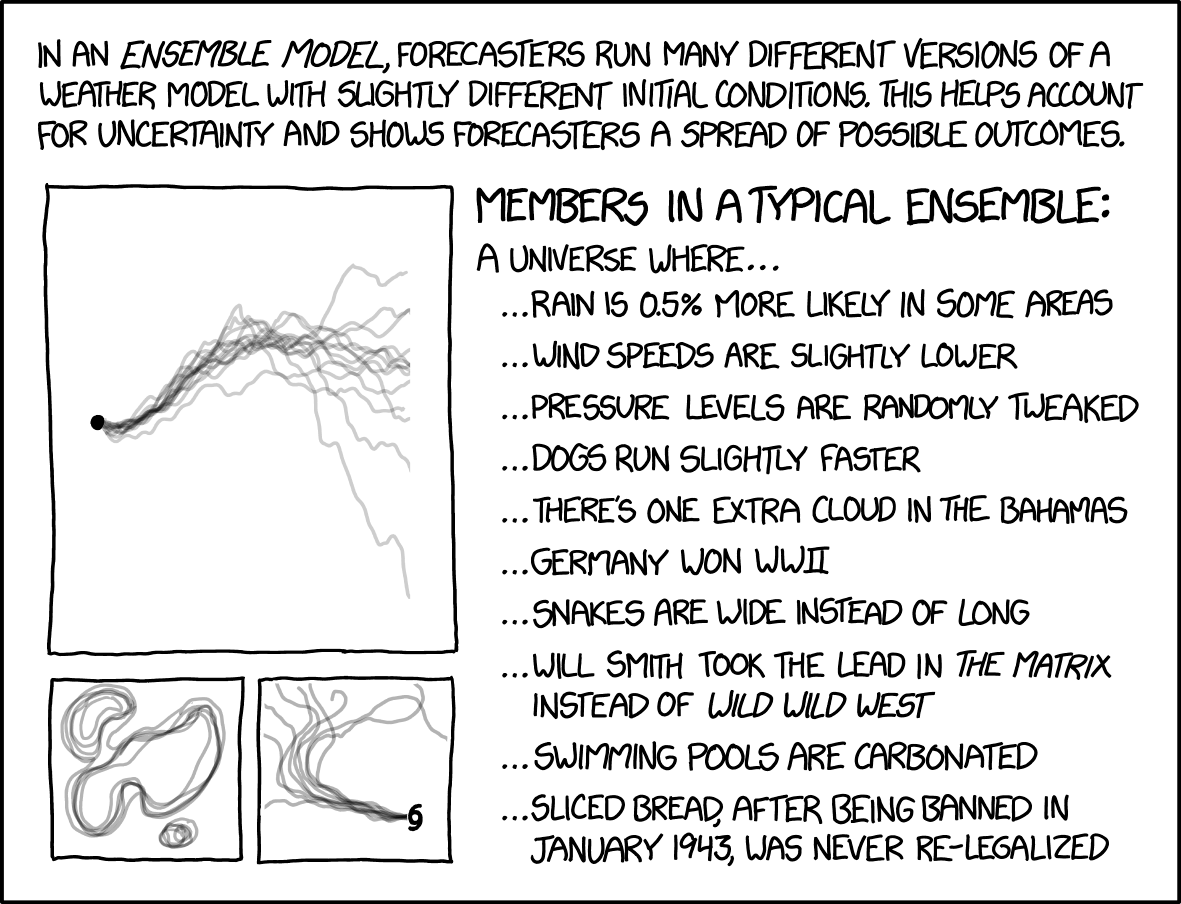Fragile ecosystems, robust assessments?
(What I did with my summer vacation)
Sarah Gaichas, Isaac Kaplan, Patrick Lynch, and Christine Stawitz
Northeast and Northwest Fisheries Science Centers,
and Office of Science & Technology
Supported by Institute of Marine Research Norway, and NOAA NMFS International Fellowship
Summer Vacation
Greece, Crete, near the cave of Polypheomos
Summer Vacation
Greece, Crete, near the cave of Polypheomos
Summer Vacation
Greece, Crete, near the cave of Polypheomos
Summer Vacation
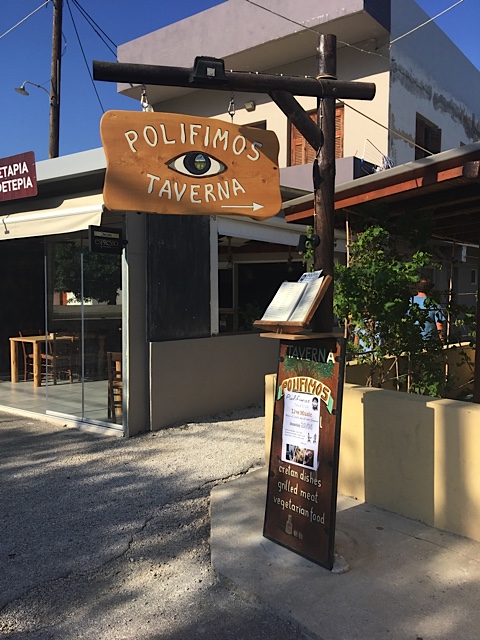
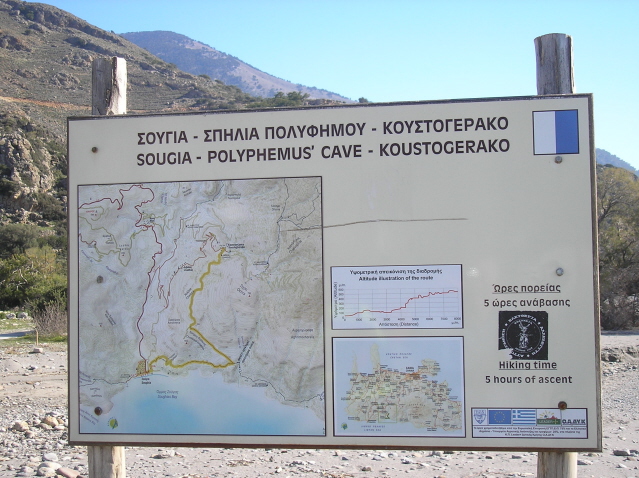
Greece, Crete, near the cave of Polypheomos
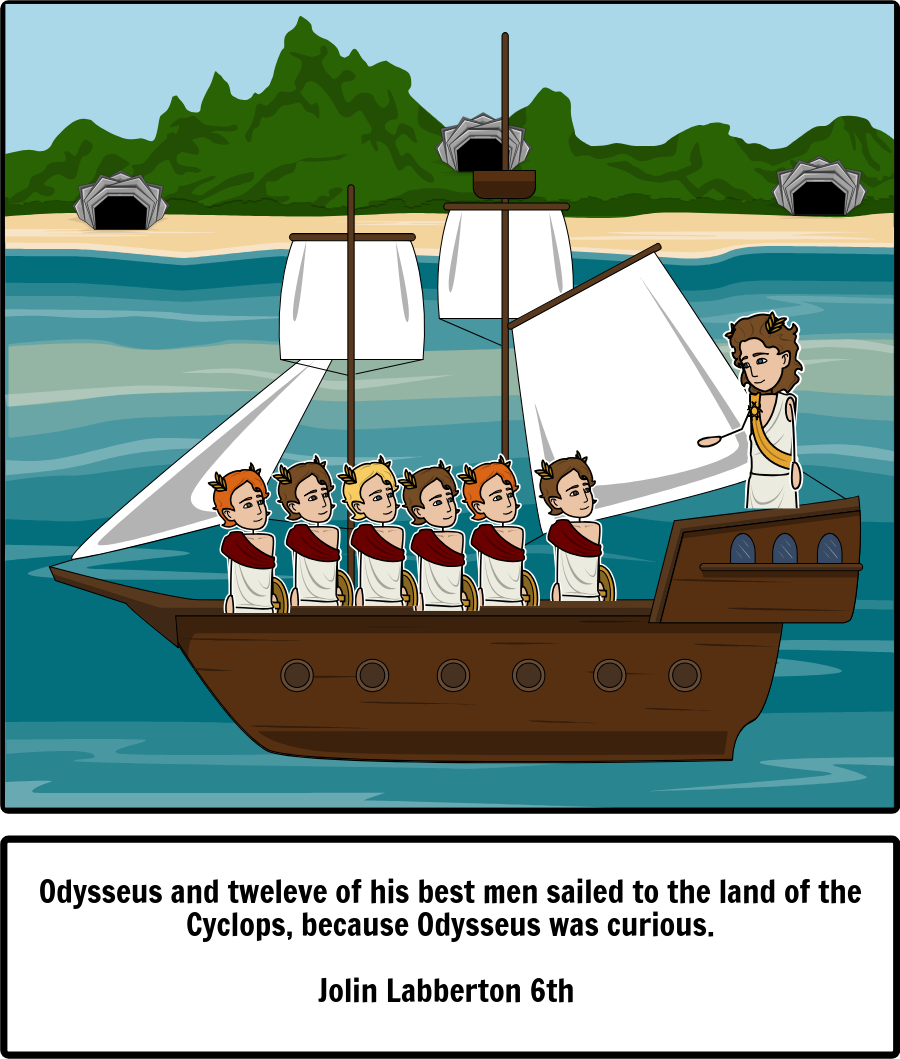
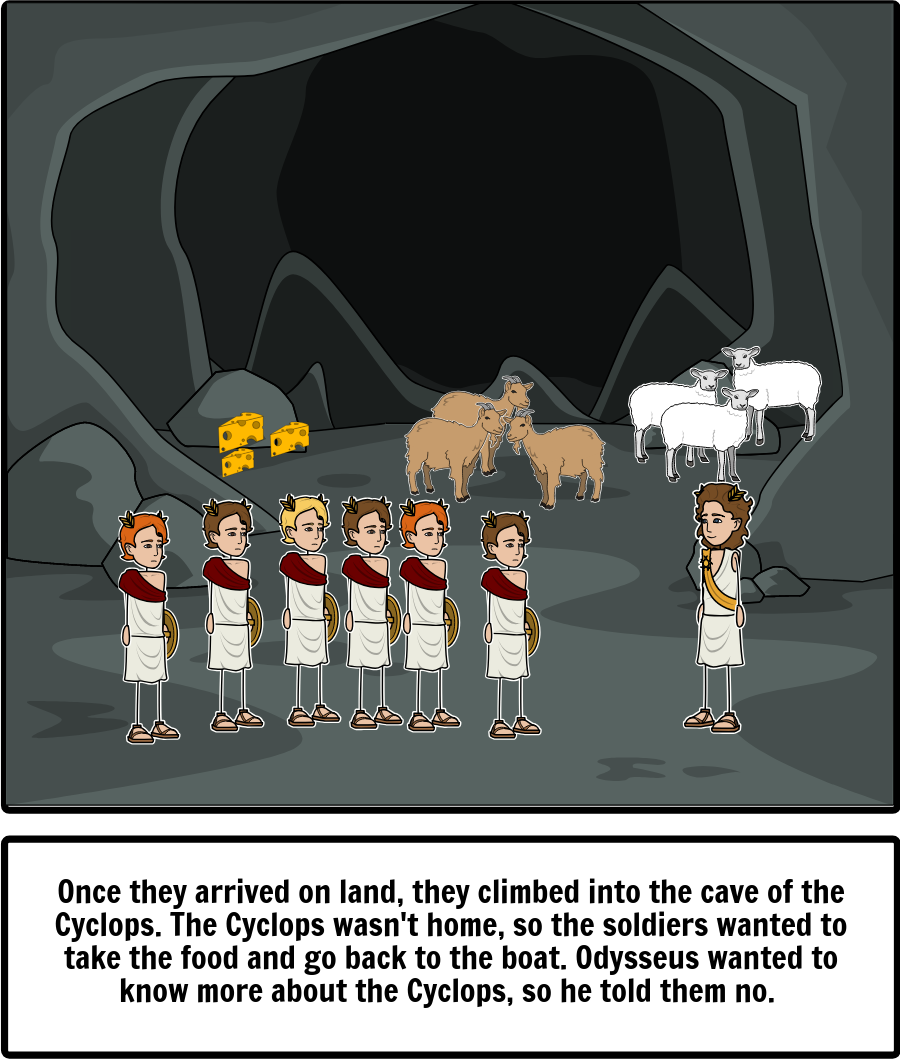
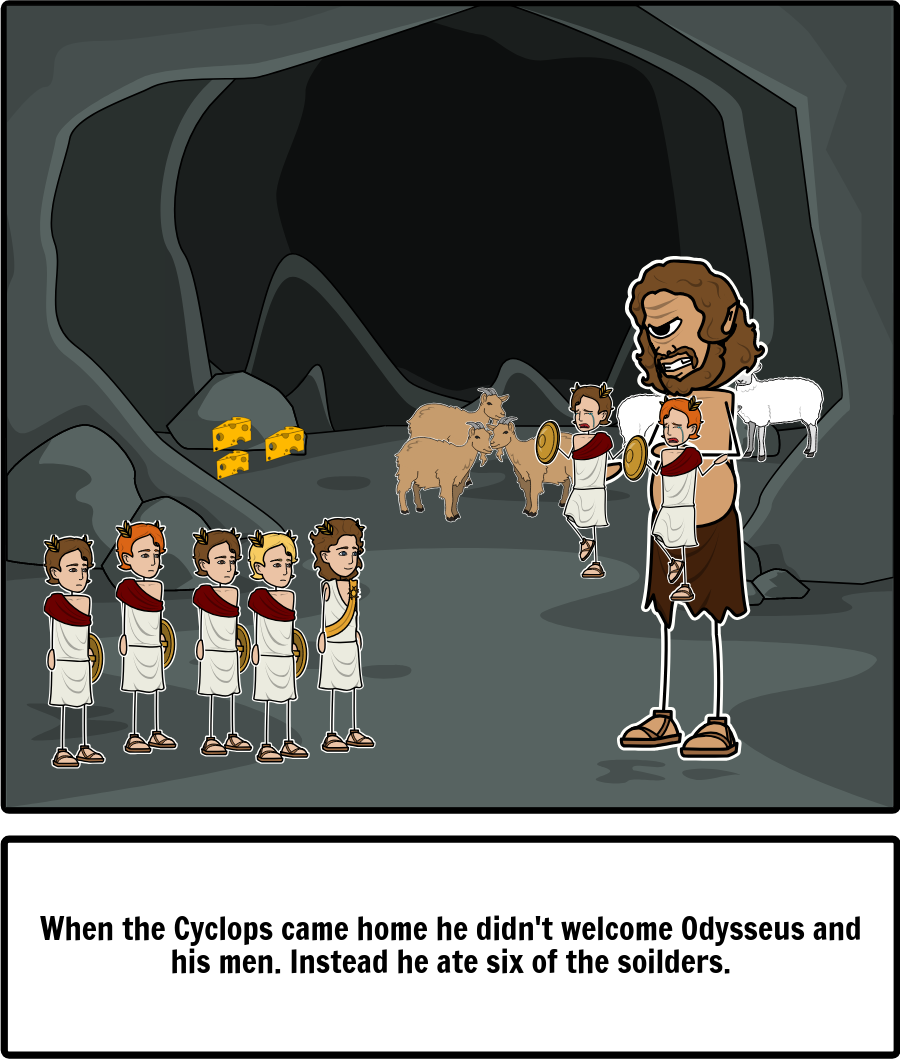
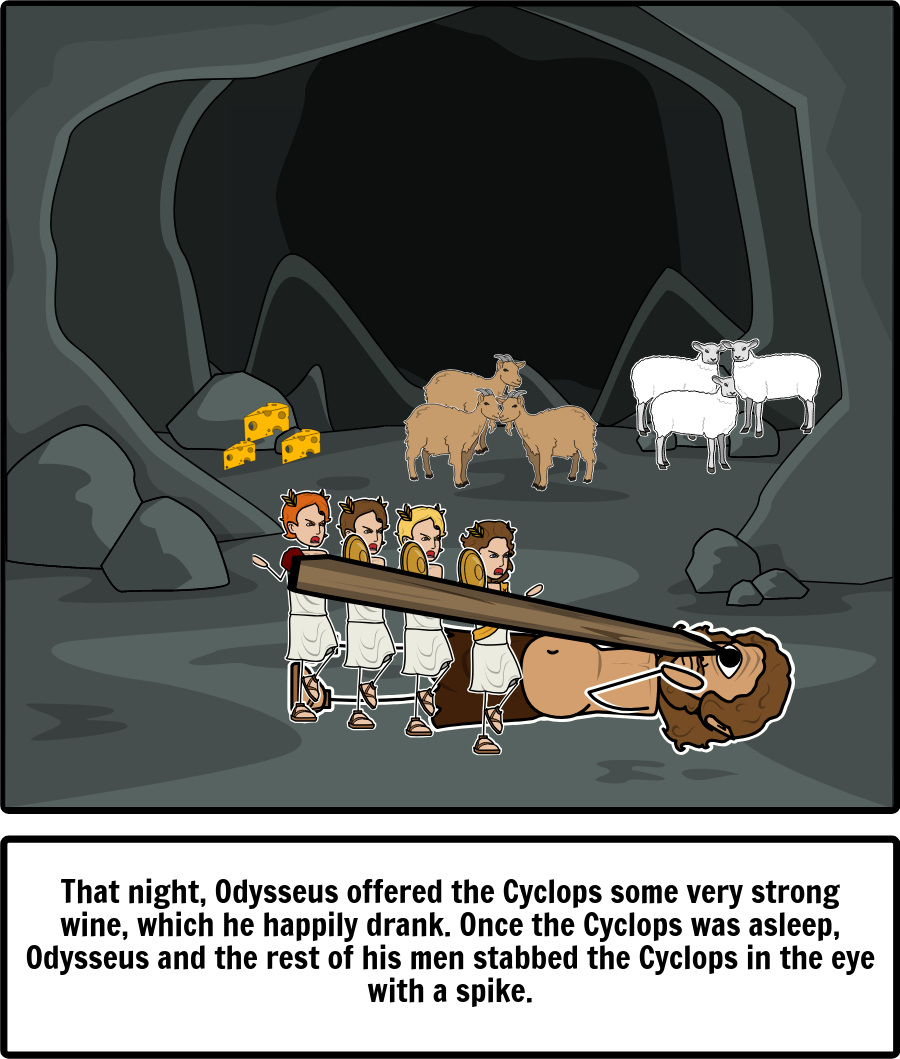
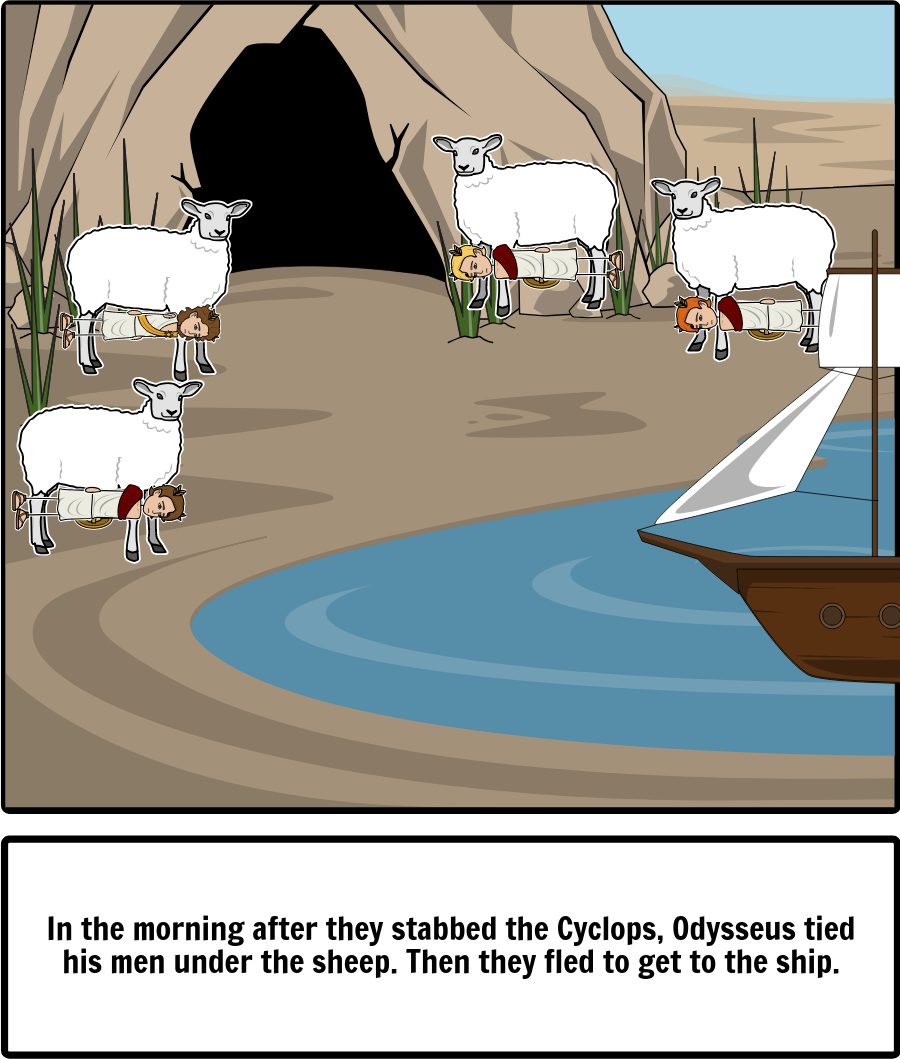
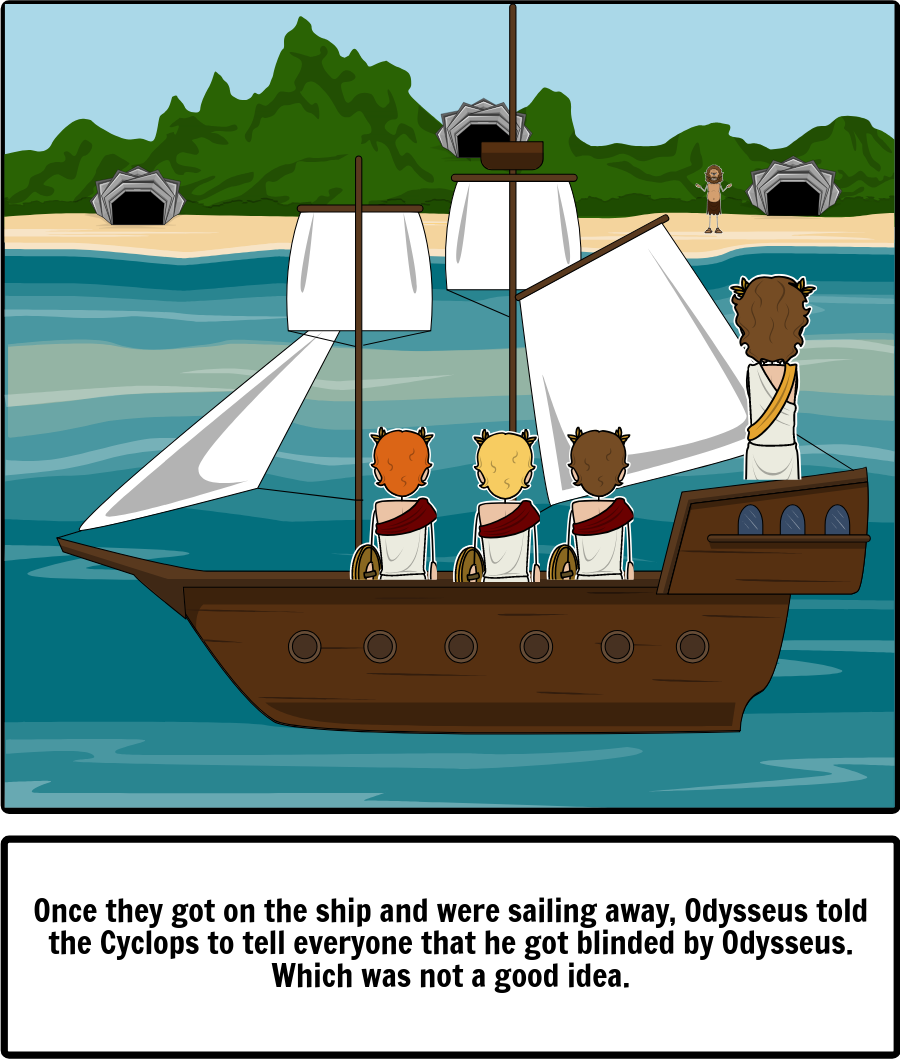
Hubris will sink you (or substantially delay achieving your objectives, and at great cost)
Things change; workarounds are important
testing is a theme (hypotheses, skills, each other)
Things we learn about Poseidon
Tricky: unforseen challenges
Vengeful: high cost of overconfidence
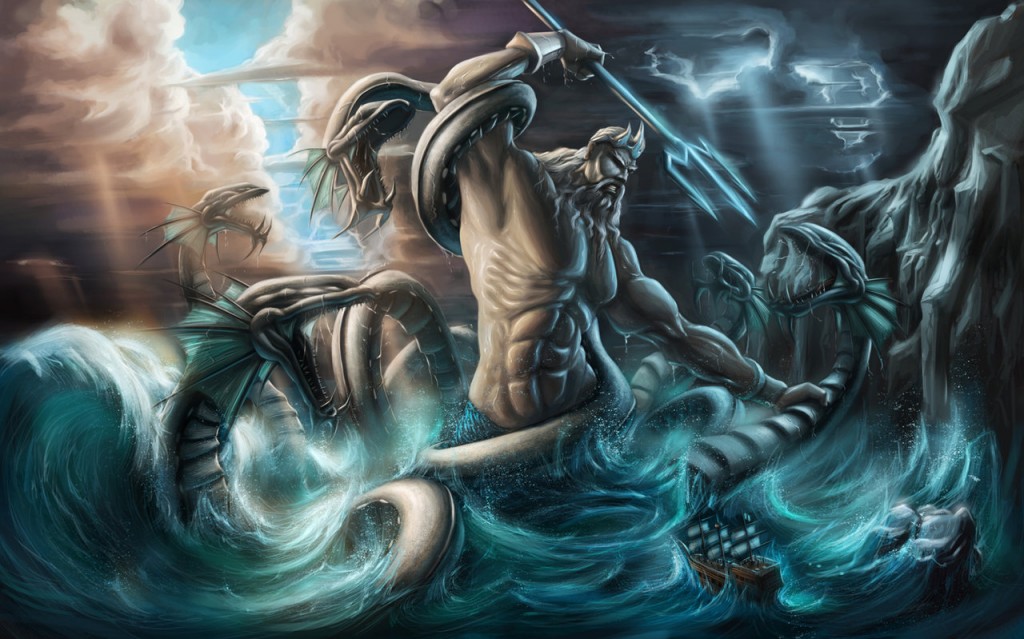
Things we learn from Odysseus
Test your models
Guard your Personally Identifiable Information (PII)
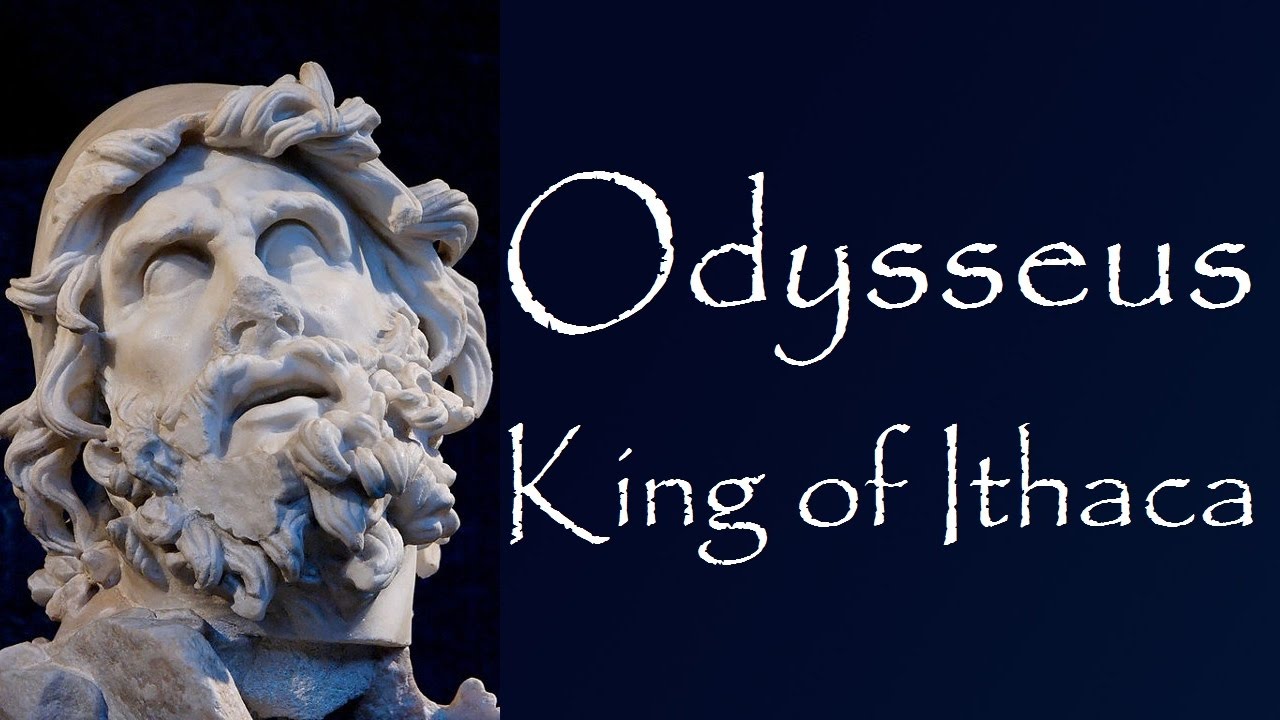
We use models for a lot
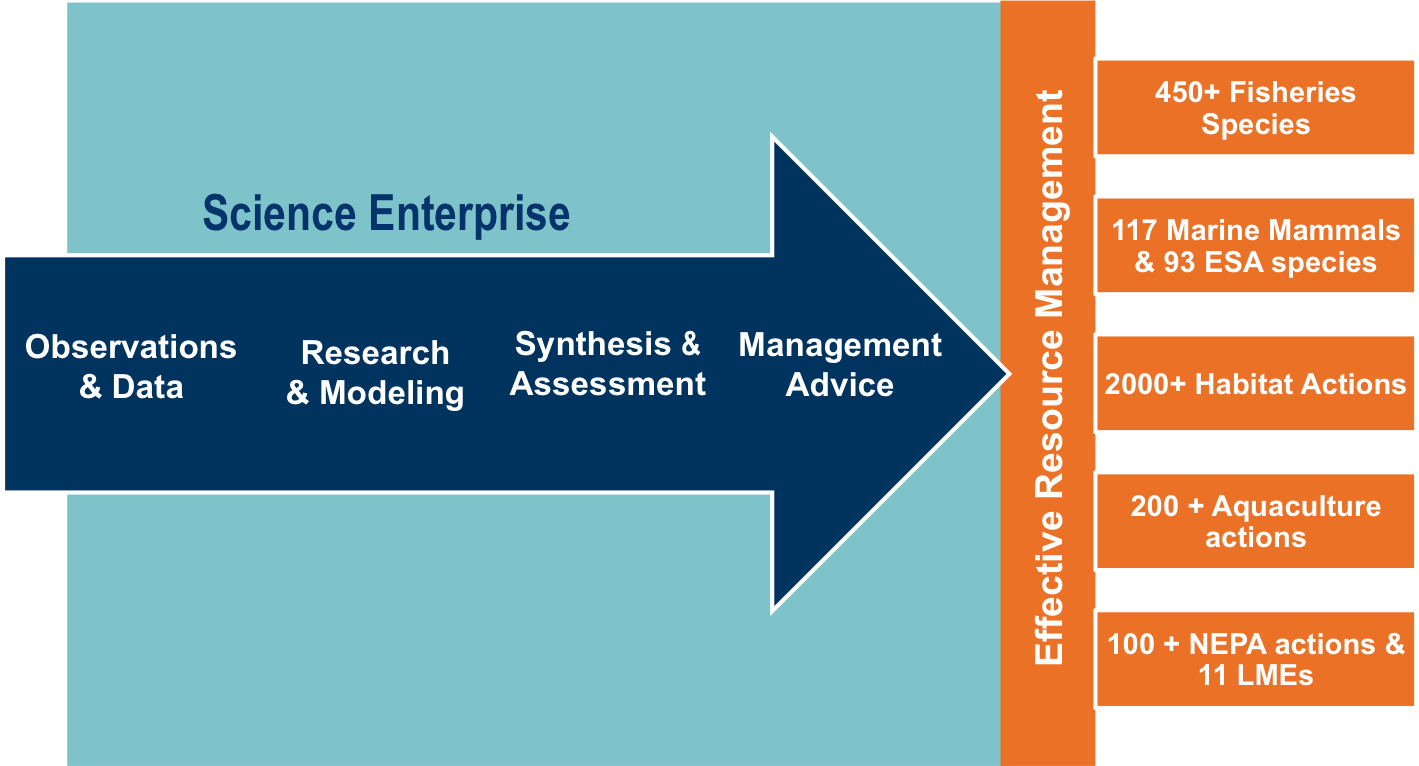
What kinds of models are there?
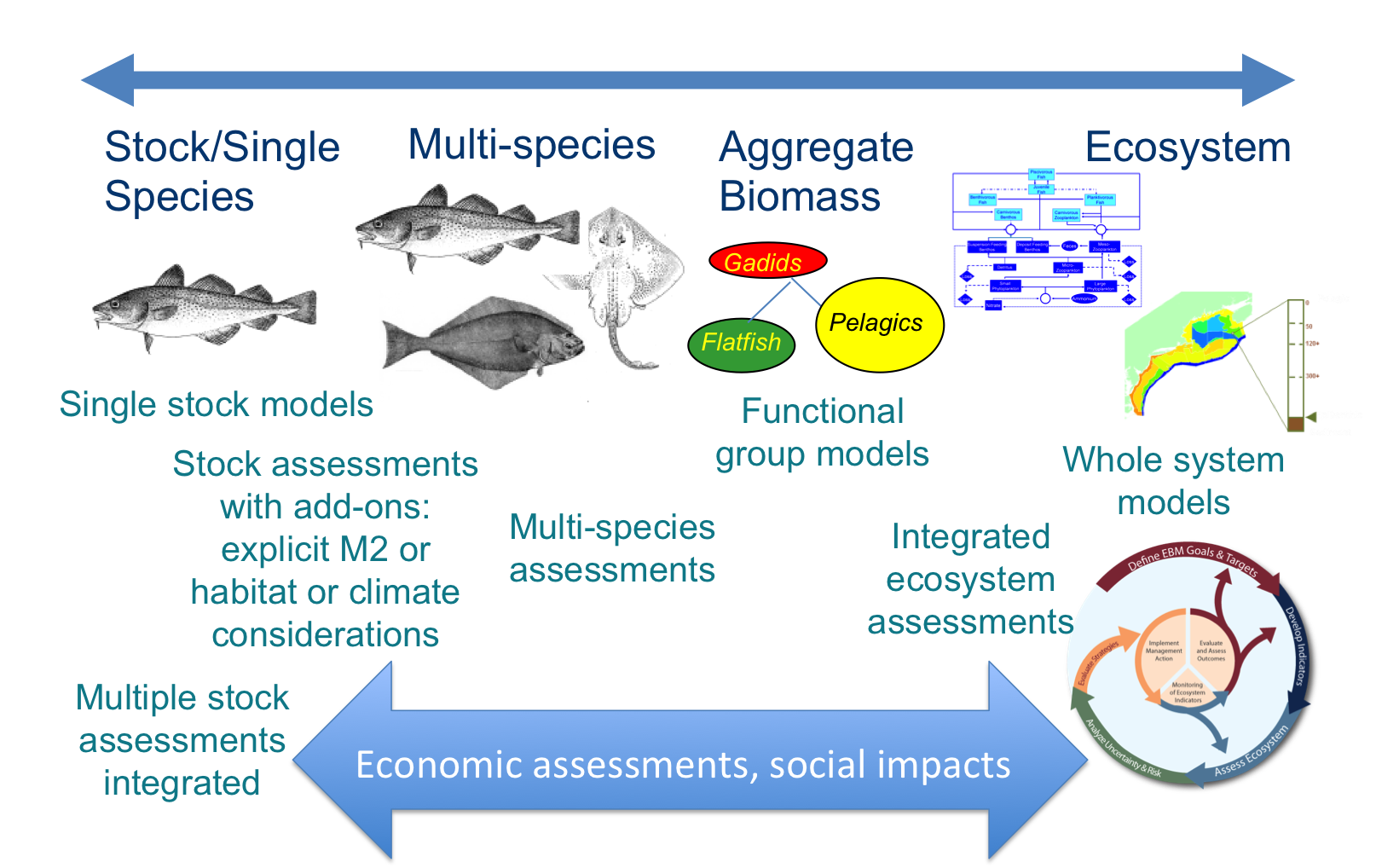
How do we know they are right?
Fits to historical data (hindcast)
Influence of data over time (retrospective diagnostics)
Keep as simple and focused as possible
Simulation testing
But What if
data are noisy?
we need to model complex interactions?
conditions change over time?
Fragile ecosystems, robust assessments? Performance testing stock assessments for the California Current and Nordic and Barents Seas under climate change
Scientist exchange central to this project
NOAA internal "international fellowship" and REDUS funding:
- Gaichas, April 15 - June 15
- Lynch, April 18 - June 7
- Kaplan, May 11 - June 21
- Christine Stawitz, May 19-25
 1
1
- Additional NMFS and IMR collaborators with diverse skills and experiences
- Kelli Johnson, Gavin Fay, Emma Hodgson, other stock assessment and modeling folks
- Cecilie Hansen, Daniel Howell, Erik Olsen, and now YOU
Project motivation
Changing climate and ocean conditions → Shifting distributions, changing productivity
Needs:
- Improve our ability to project global change impacts in the California Current and Nordic/Barents Seas (and elsewhere)
- Test the performance of stock assessments to these impacts
Climate-Ready Management1
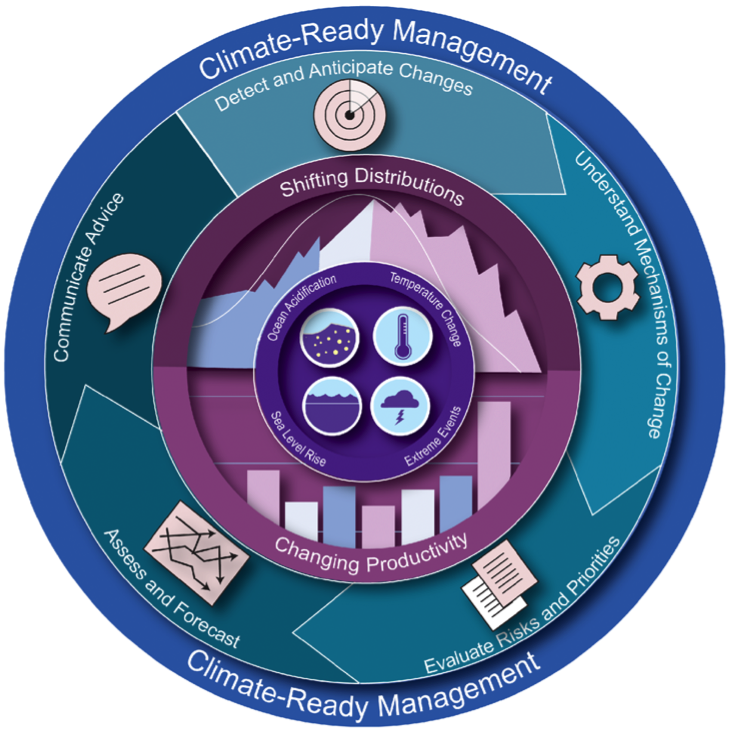
[1] Karp, Melissa A. et al. 2019. Accounting for shifting distributionsand changing productivity in the development of scientific advice for fishery management. – ICES Journal of Marine Science, doi:10.1093/icesjms/fsz048.
End-to-end ecosystem operating models
Atlantis modeling framework: Fulton et al. 2011, Fulton and Smith 2004
Building on global change projections: Hodgson et al. 2018, Olsen et al. 2018
Project overview
Scenarios for effects of temperature on growth, natural mortality
Focus on key stocks (Northeast Arctic cod, Norwegian spring spawning herring, California Current sardine, Pacific hake or a Pacific rockfish)
Atlantis output → dataset generator (
atlantisom) → Stock Synthesis assessmentCompare performance of different model settings, multiple models, model ensembles
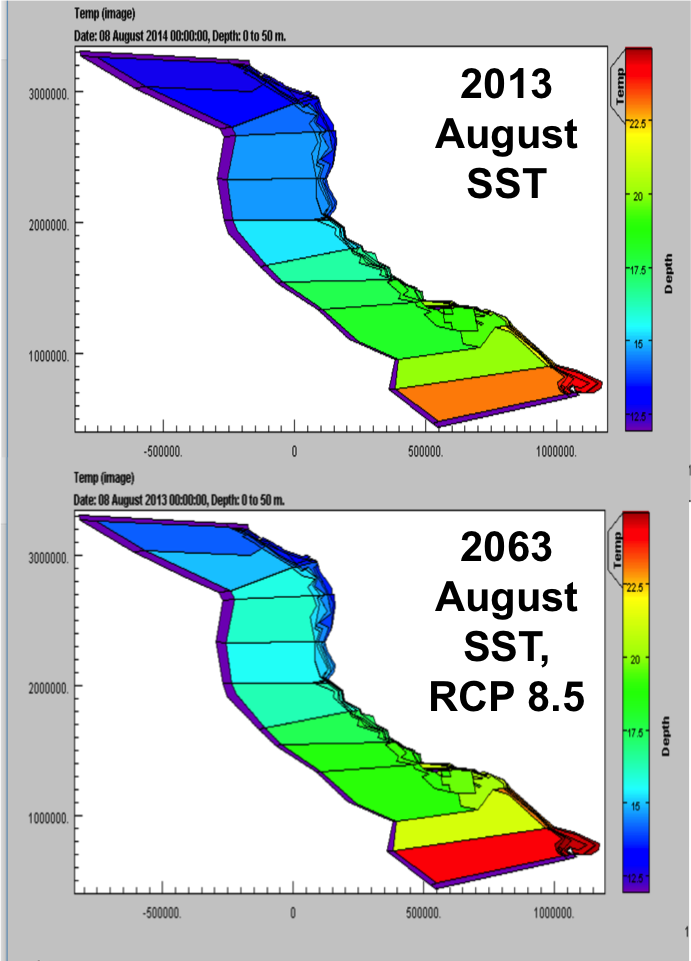
atlantisom → multispecies, other single species models for testingTest both estimation and (simple) MSE capability
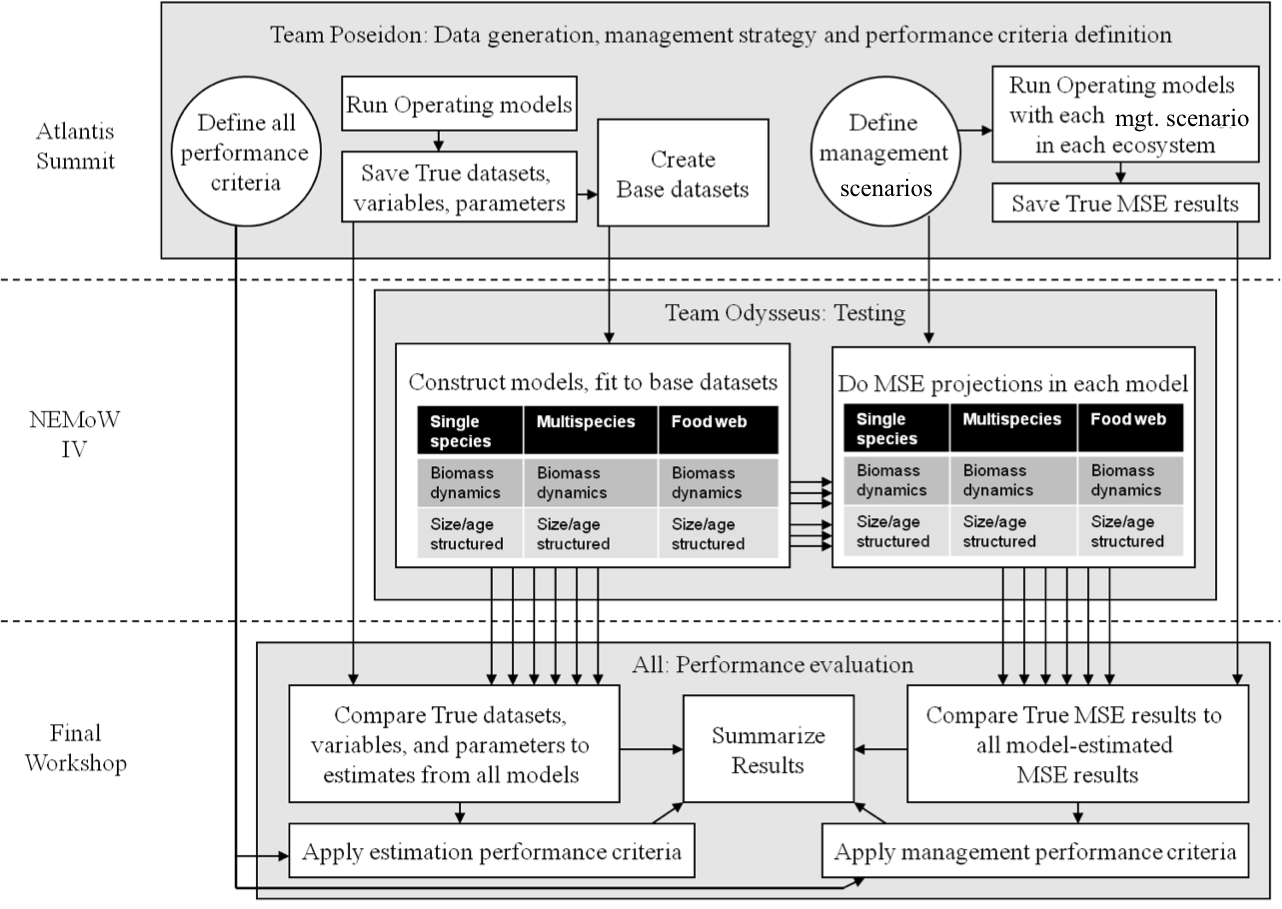
Design: Operating model scenario (climate and fishing)
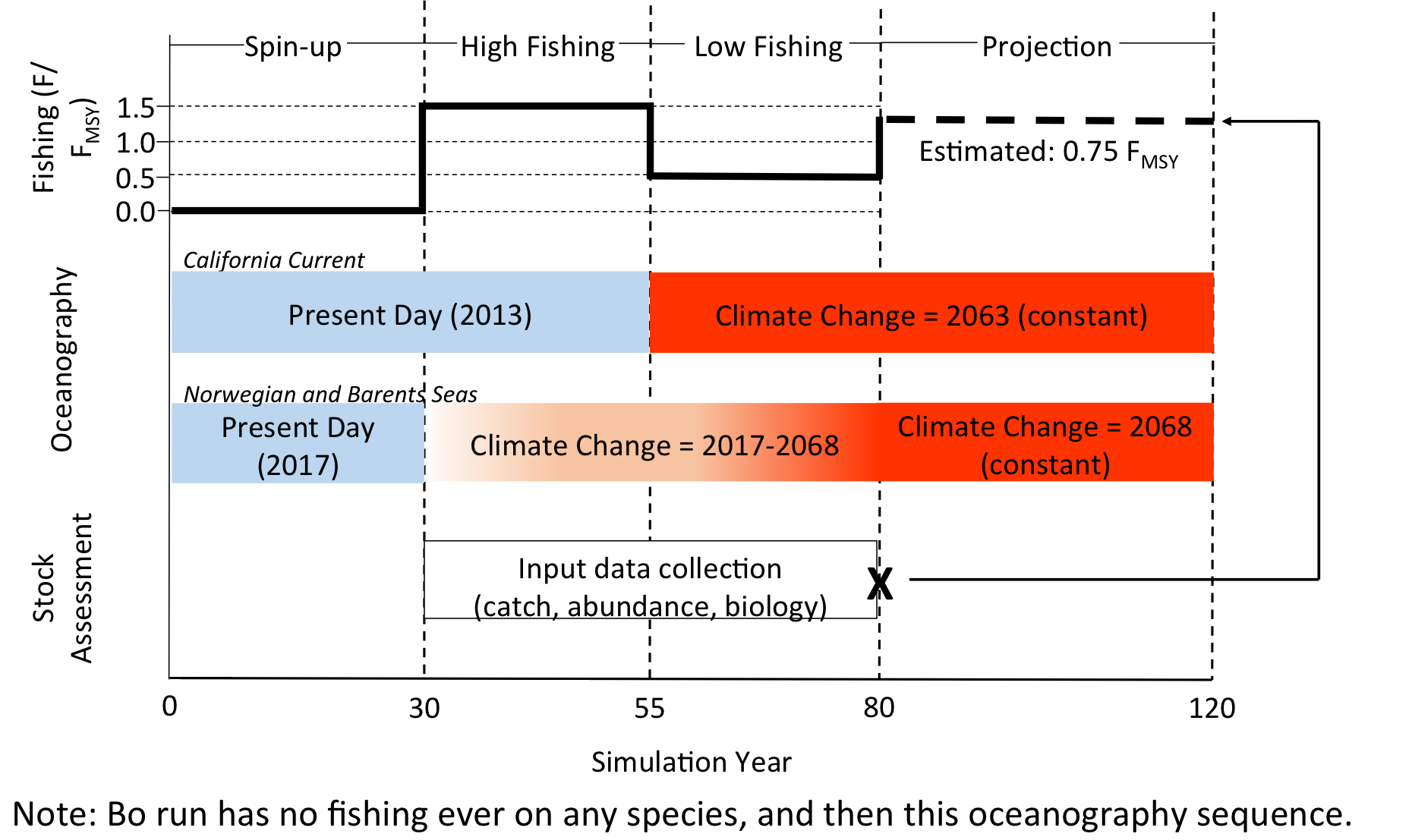
Design: Operating model scenario (climate and fishing)

Recruitment variability in the operating model
Specify uncertainty in assessment inputs using
atlantisom
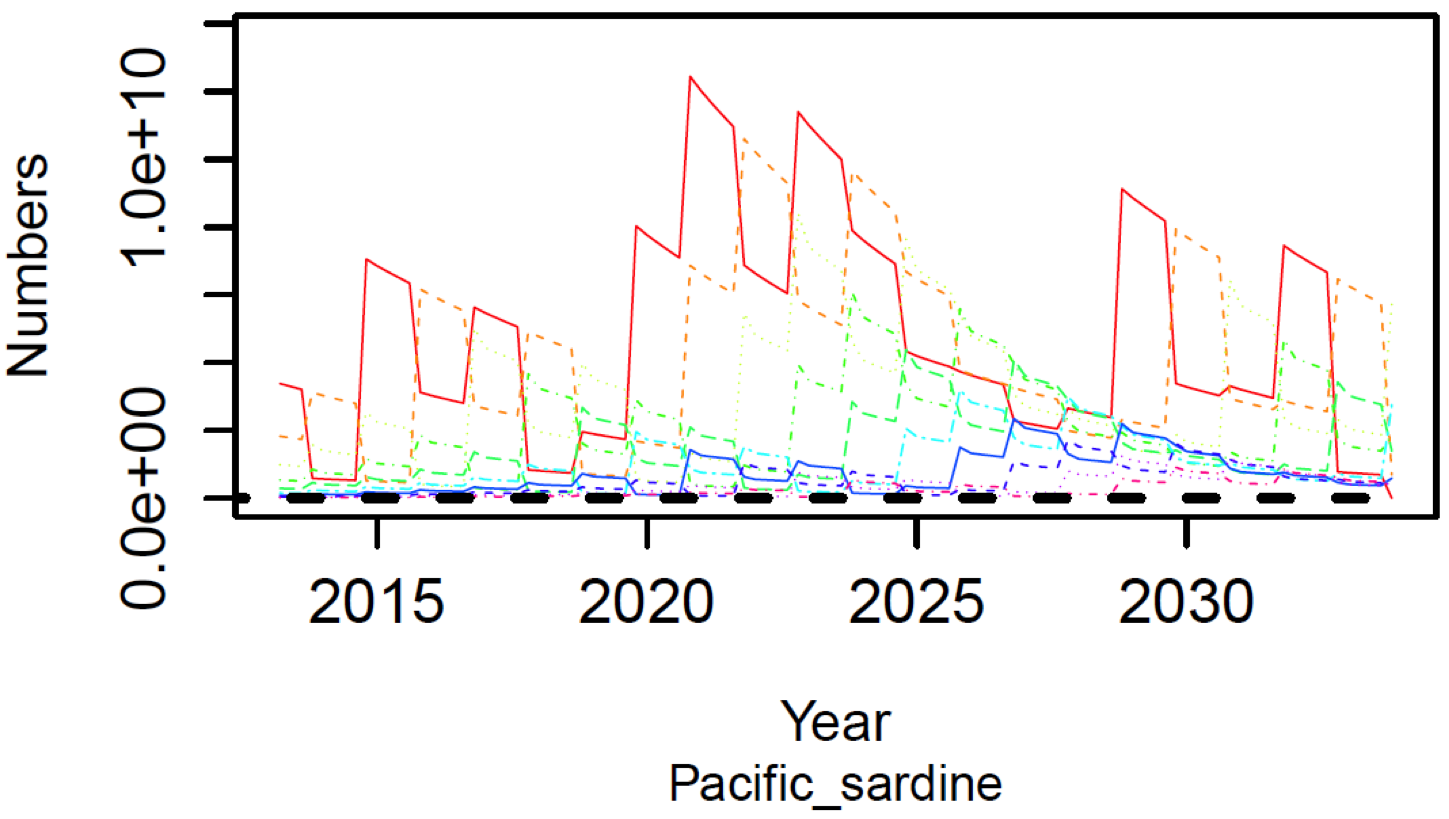
Climate impacts in the operating model
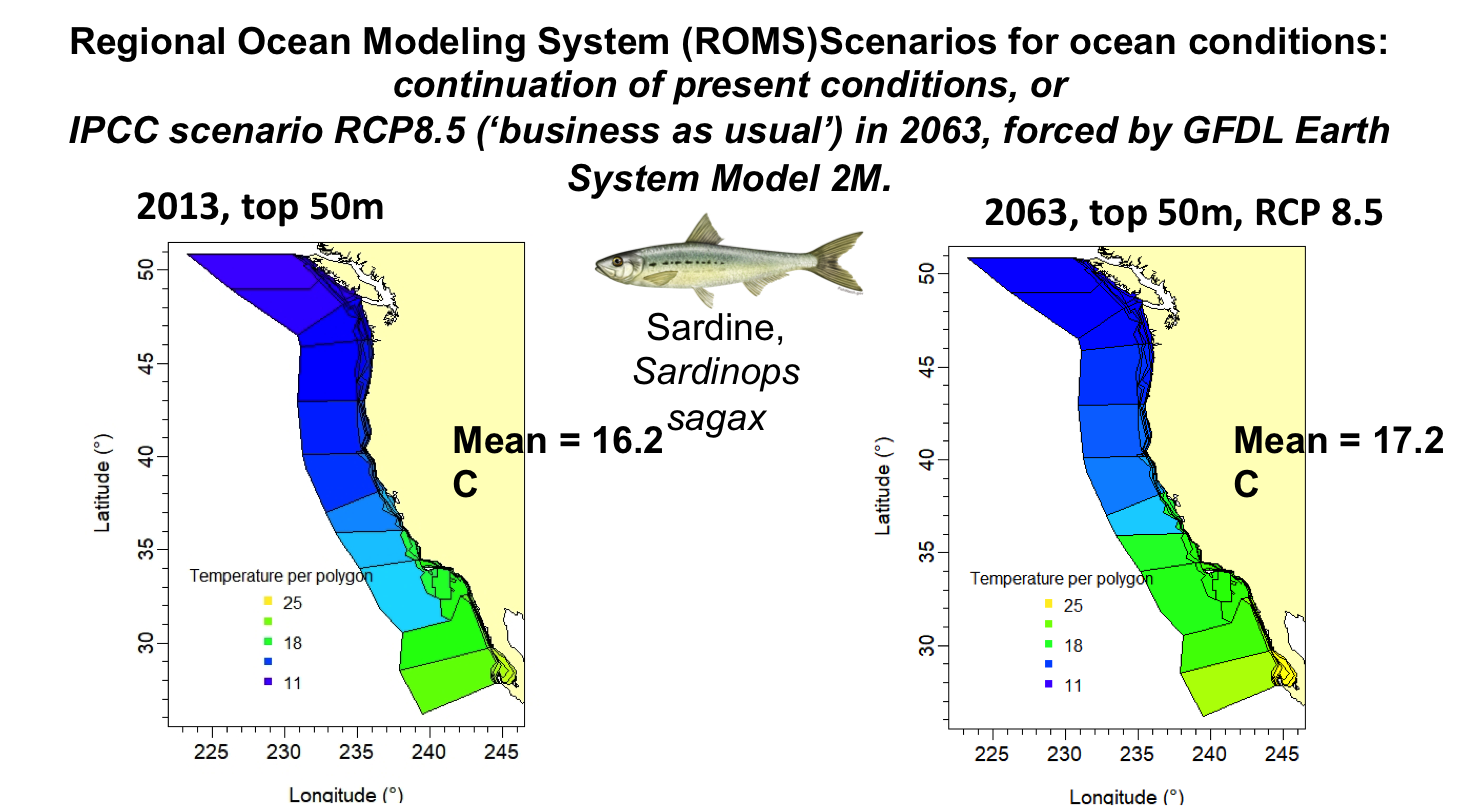
Hodgson, E. E., Kaplan, I. C., Marshall, K. N., Leonard, J., Essington, T. E., Busch, D. S., Fulton, E. A., et al. 2018. Consequences of spatially variable ocean acidification in the California Current: Lower pH drives strongest declines in benthic species in southern regions while greatest economic impacts occur in northern regions. Ecological Modelling, 383: 106–117.
Marshall, K. N., Kaplan, I. C., Hodgson, E. E., Hermann, A., Busch, D. S., McElhany, P., Essington, T. E., et al. 2017. Risks of ocean acidification in the California Current food web and fisheries: ecosystem model projections. Global Change Biology, 23: 1525–1539.
Climate impacts in the operating model
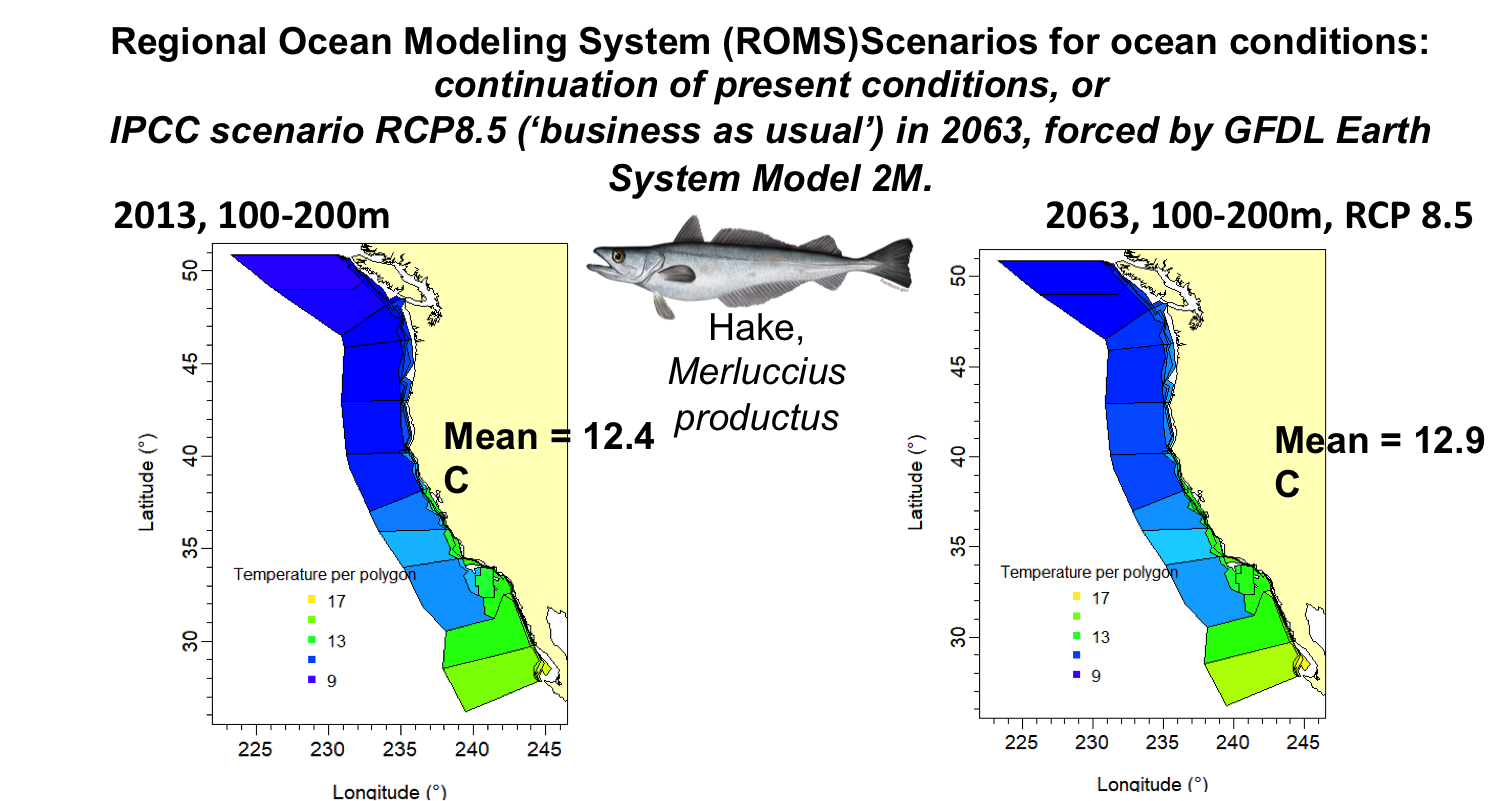
Hodgson, E. E., Kaplan, I. C., Marshall, K. N., Leonard, J., Essington, T. E., Busch, D. S., Fulton, E. A., et al. 2018. Consequences of spatially variable ocean acidification in the California Current: Lower pH drives strongest declines in benthic species in southern regions while greatest economic impacts occur in northern regions. Ecological Modelling, 383: 106–117.
Marshall, K. N., Kaplan, I. C., Hodgson, E. E., Hermann, A., Busch, D. S., McElhany, P., Essington, T. E., et al. 2017. Risks of ocean acidification in the California Current food web and fisheries: ecosystem model projections. Global Change Biology, 23: 1525–1539.
Climate + cumulative impacts in the operating model
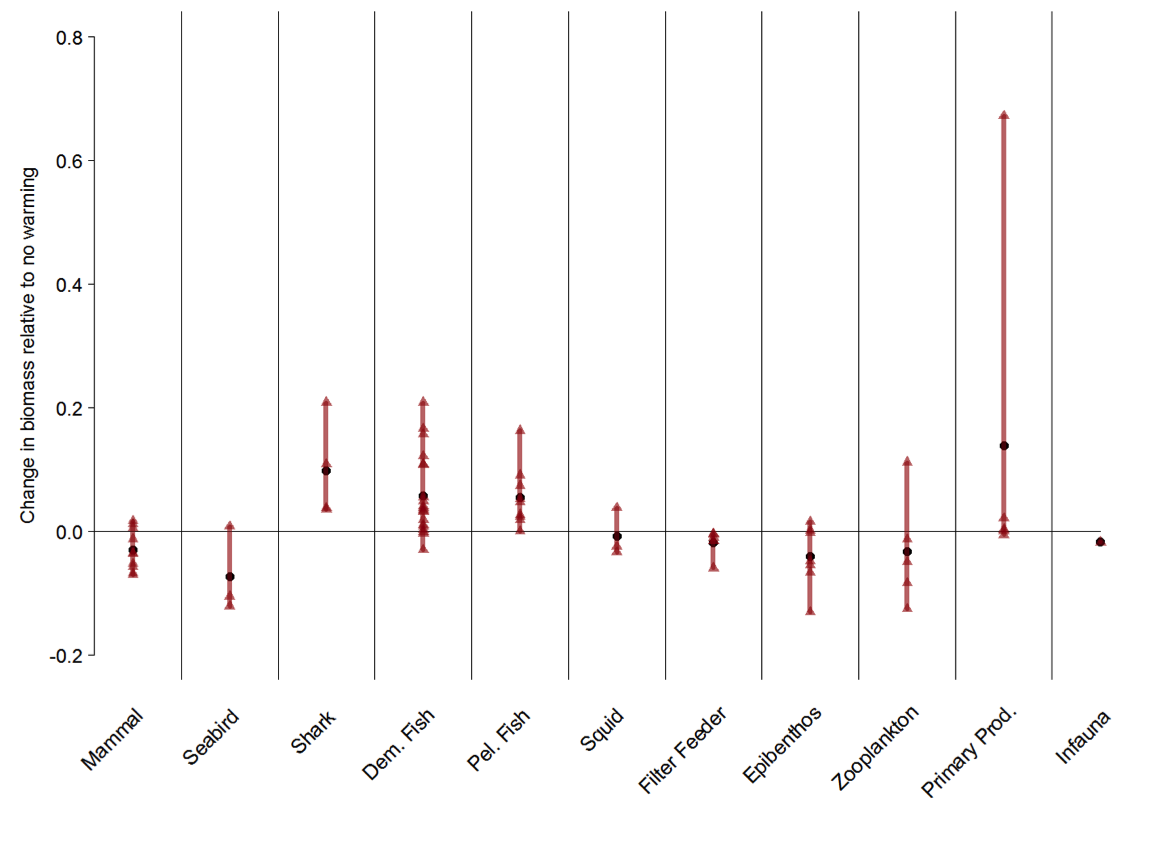
Stock assessment uncertainty
- Focus on climate impacts to growth and natural mortality (productivity)
Full factorial design over common stock assessment assumptions
Growth:
- constant growth parameters
- regime shifts in growth parameters (Stawitz et al. 2019)
- empirical weight-at-age (Kuriyama et al. 2016)
Natural mortality:
- fixed at an “uninformed” constant value of 0.2
- fixed at a constant value that reflects the true average value (over time) from the OM
- establishing regimes by fixing at the true average values from the OM over specified time blocks
Also, an equally weighted ensemble of the 9 estimation models
Stock synthesis framework initially, but extend to other assessment models, generalize, and learn from Norwegian data and assessment framework
Experimental design
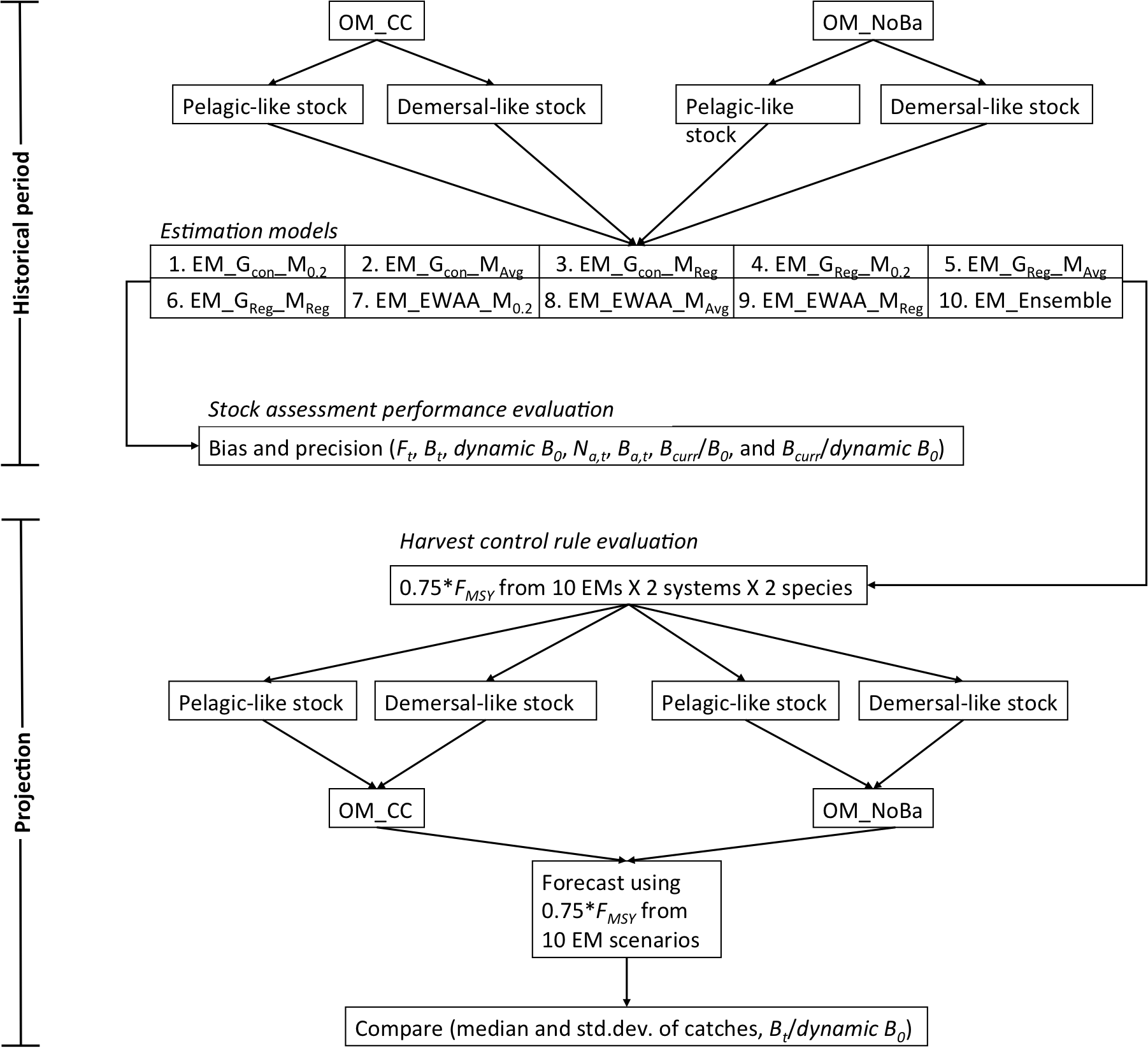
Make atlantis output into assessment model input
Example workflows:
Get true biomass, abundance, age composition, length composition, weight at age, fishery catch, fishery catch at age, fishery length composition, and fishery weight age age for a "sardine-like species": https://sgaichas.github.io/poseidon-dev/FullSardineTruthEx.html
Format these outputs and get other life history parameters for input into a stock assessment model (Stock Synthesis, using
r4ss): https://sgaichas.github.io/poseidon-dev/CreateStockSynthesis.htmlGet true and observed input data, format inputs, and run the assessment model: https://sgaichas.github.io/poseidon-dev/SardinesHakeatlantisom2SStest.html
In progress: compare assessment results with truth: https://sgaichas.github.io/poseidon-dev/SkillAssessInit.html
What can we do so far?
Survey census test NOBA
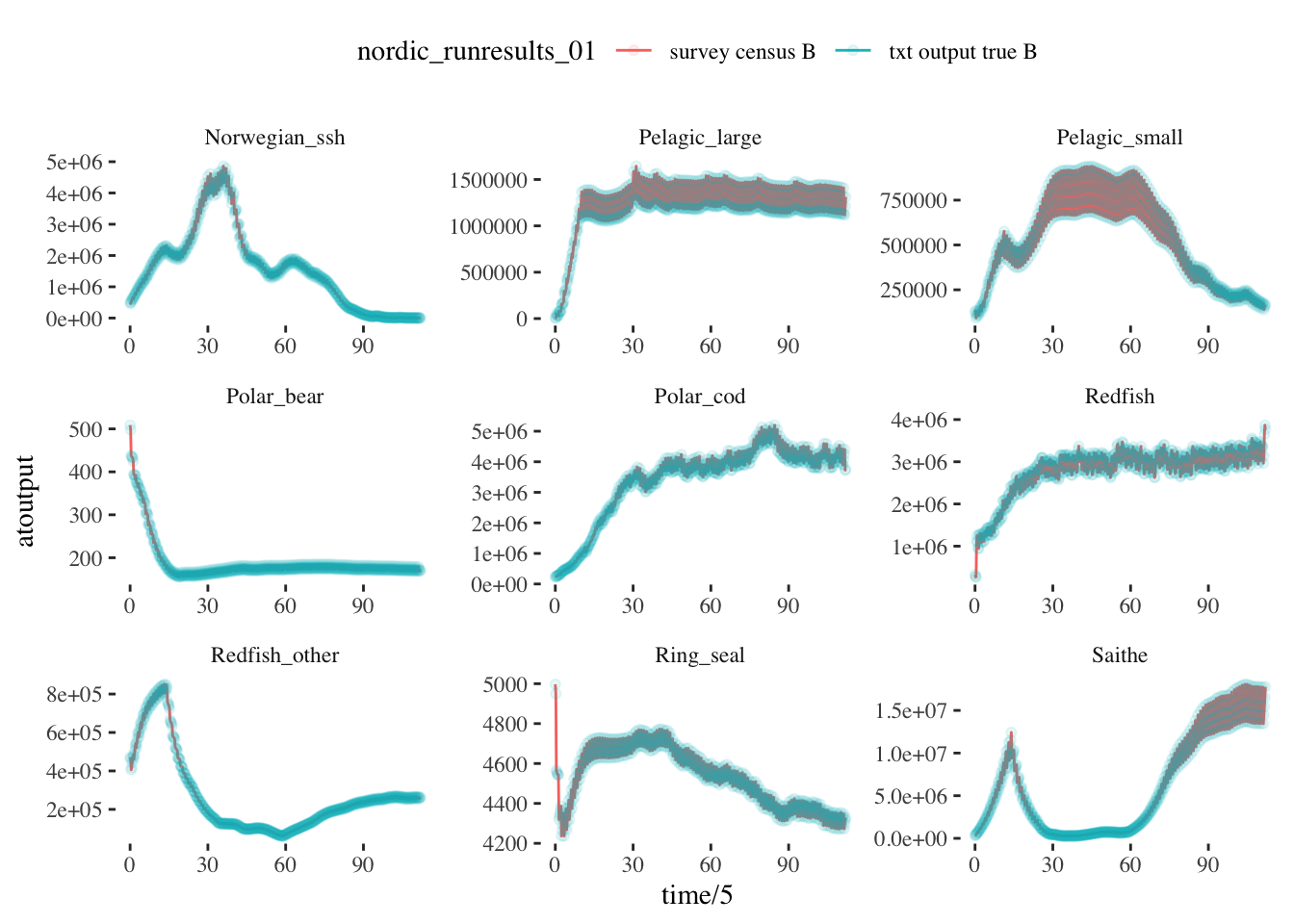
True length composition NOBA
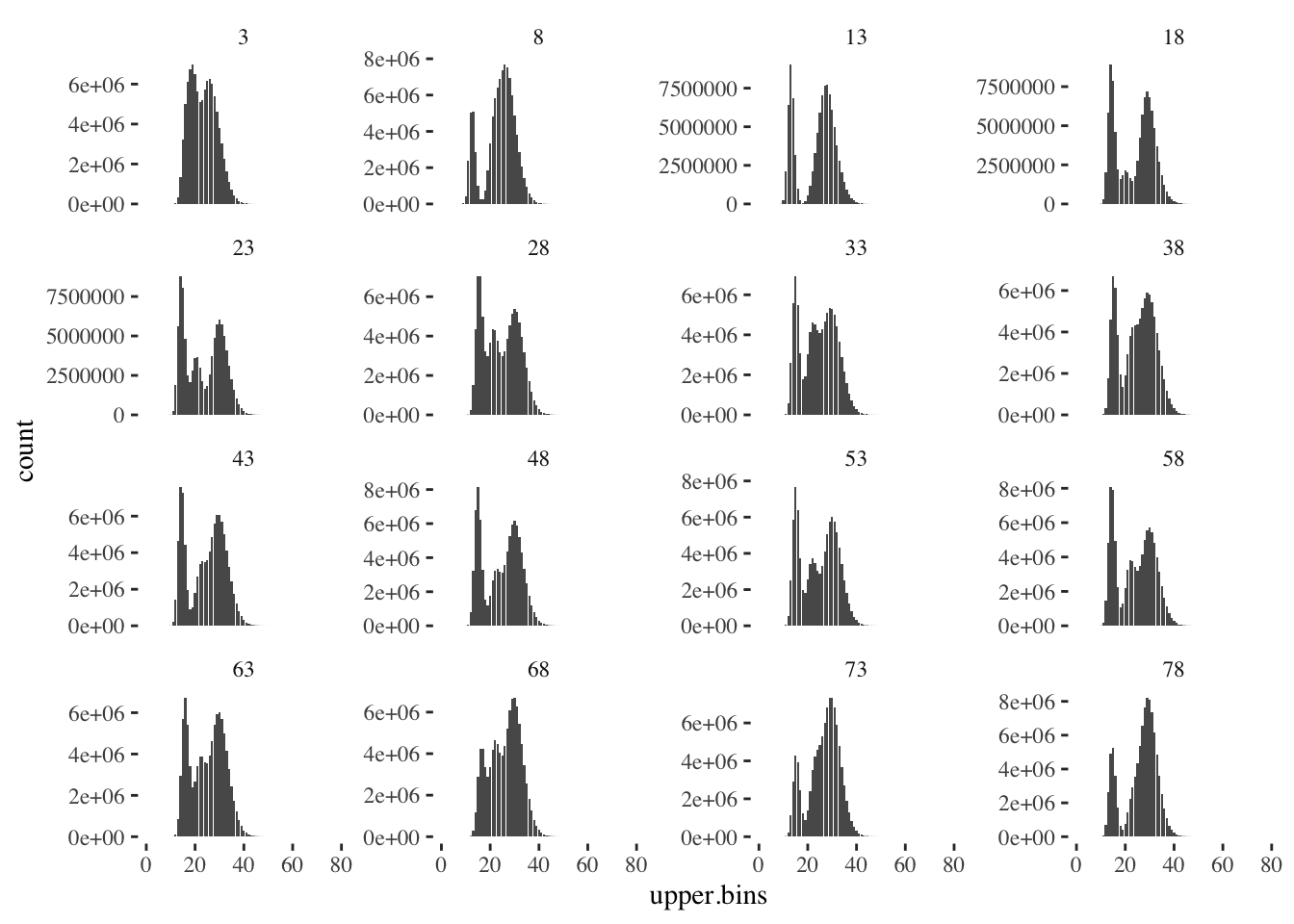
Standard survey test CCA
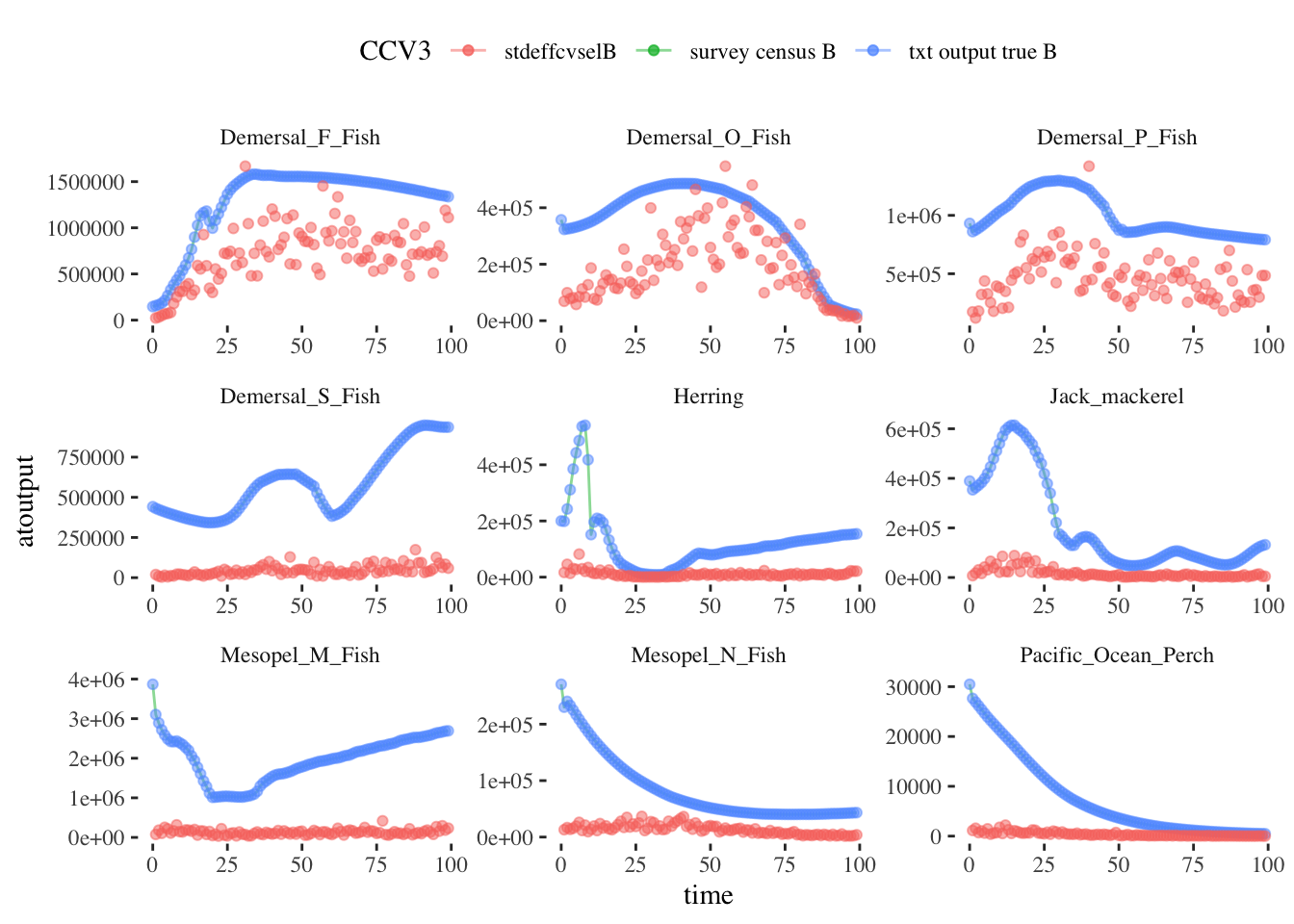
Survey length composition CCA
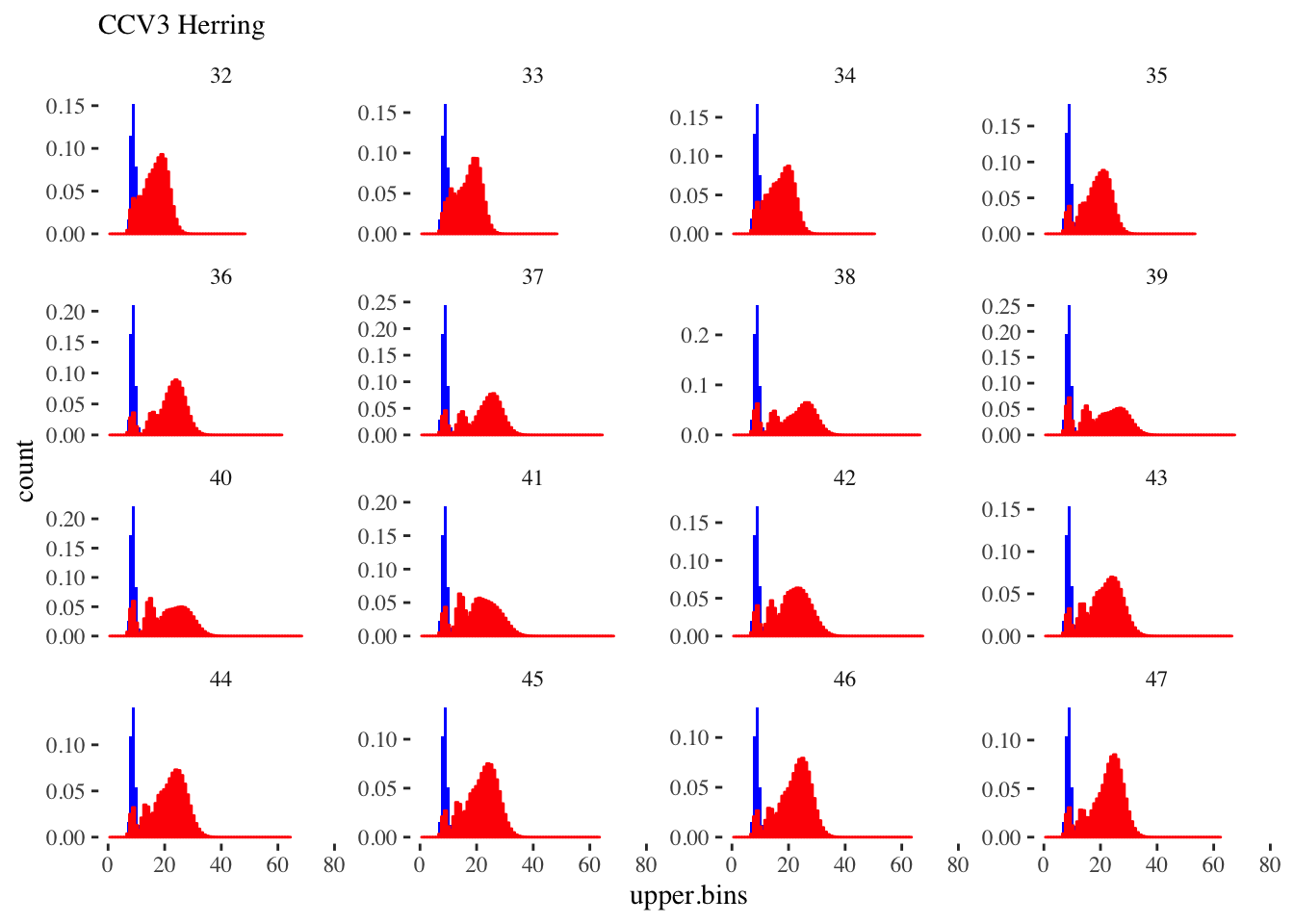
A "sardine" assessment
Need: assessment model data inputs and life history parameters
(model based on actual Sardine assessment in Stock Synthesis 3)
Data:
- survey biomass index
- survey length composition
- survey age composition (conditional catch at age)
- fishery catch (tons)
- fishery length composition
- fishery age composition
Parameters:
- natural mortality (from total mortality)
- growth curve (from survey length at age)
- maturity at age (true)
- unfished recruitment and steepness (true)
- weight-length curve (true)
A "sardine" assessment: setup
- California Current Atlantis run with and without climate signal
- Input data generated (e.g. sardine survey, below in green)
- Parameters derived; simpler recruitment distribution
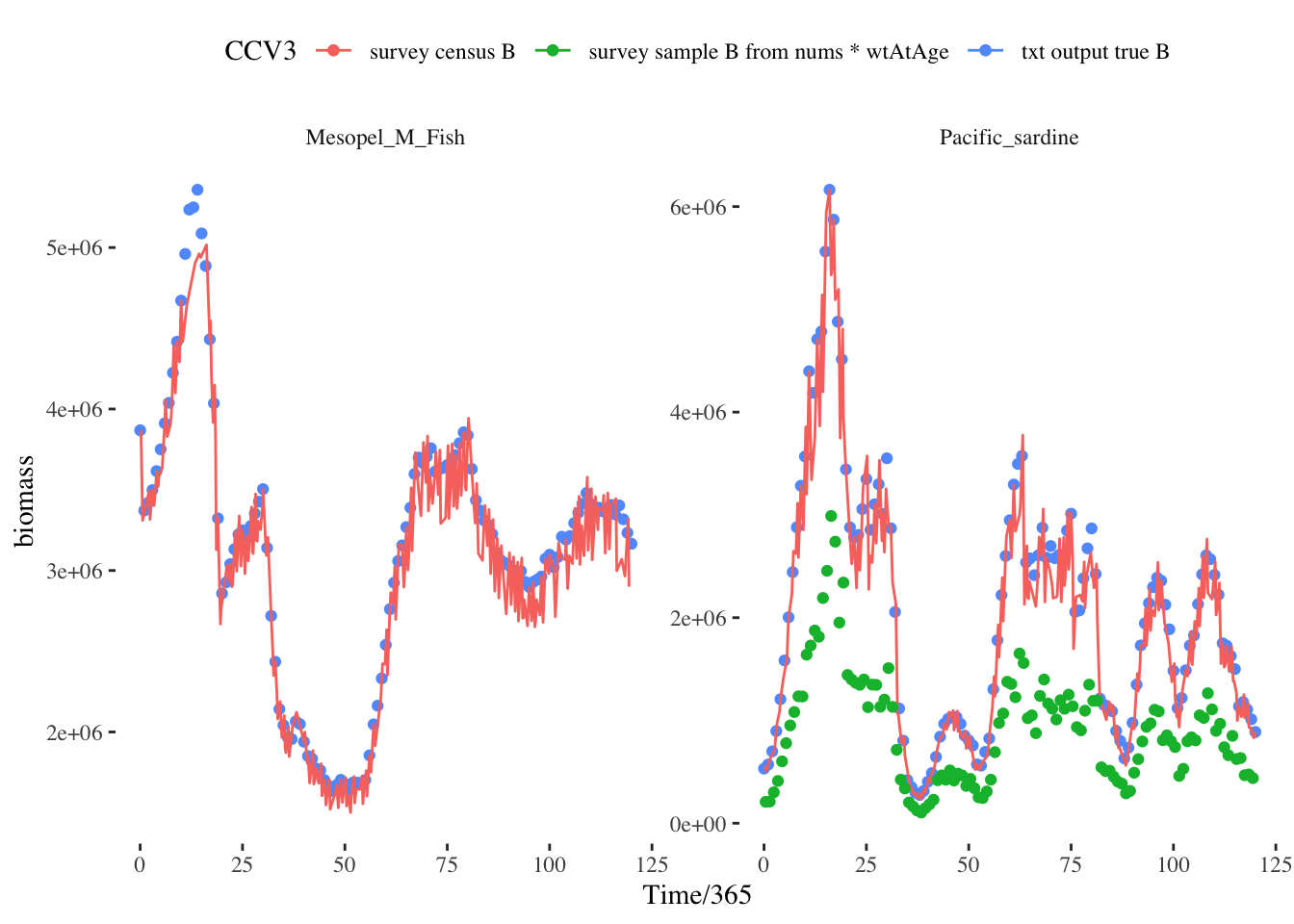
A "sardine" assessment: fits to data
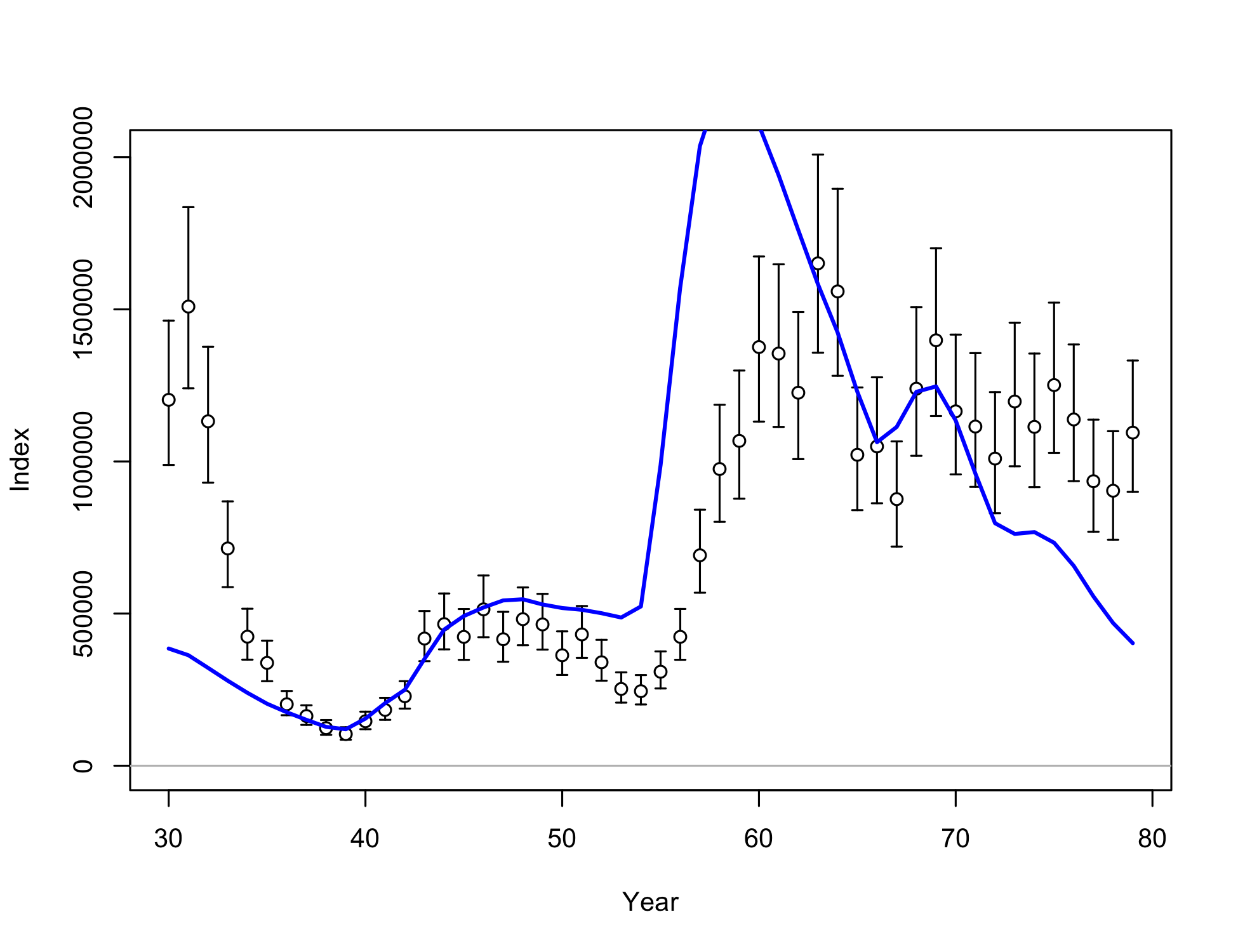
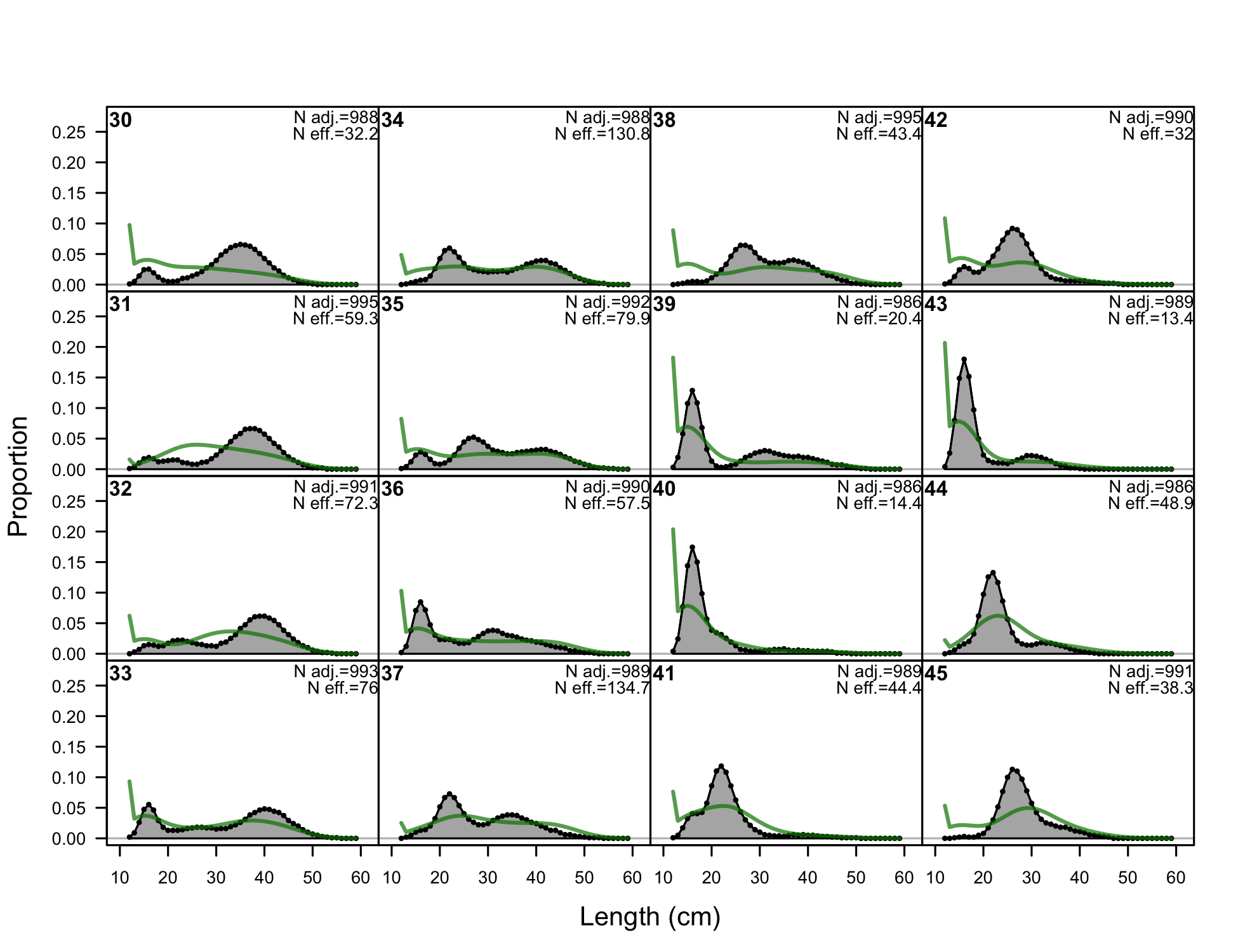
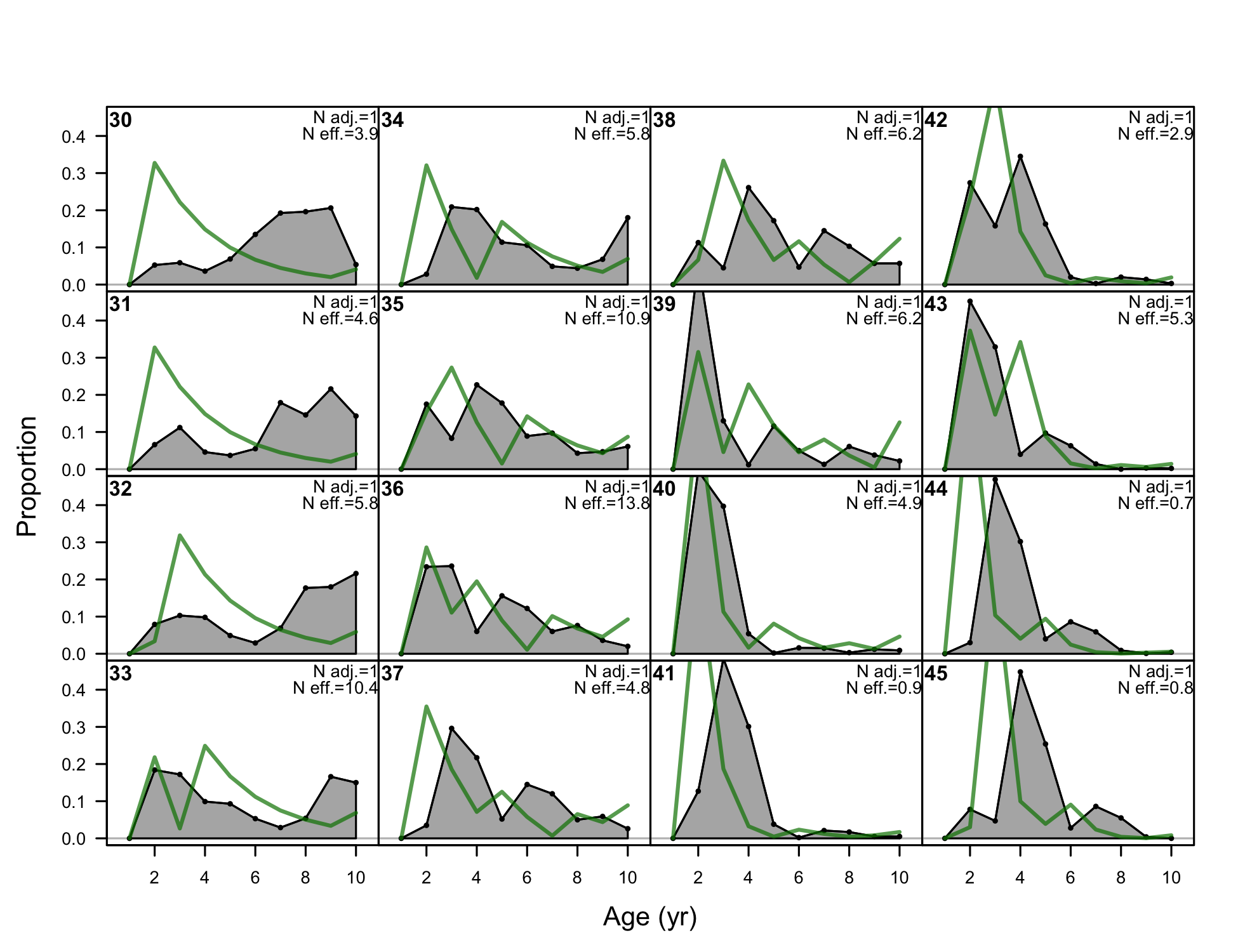
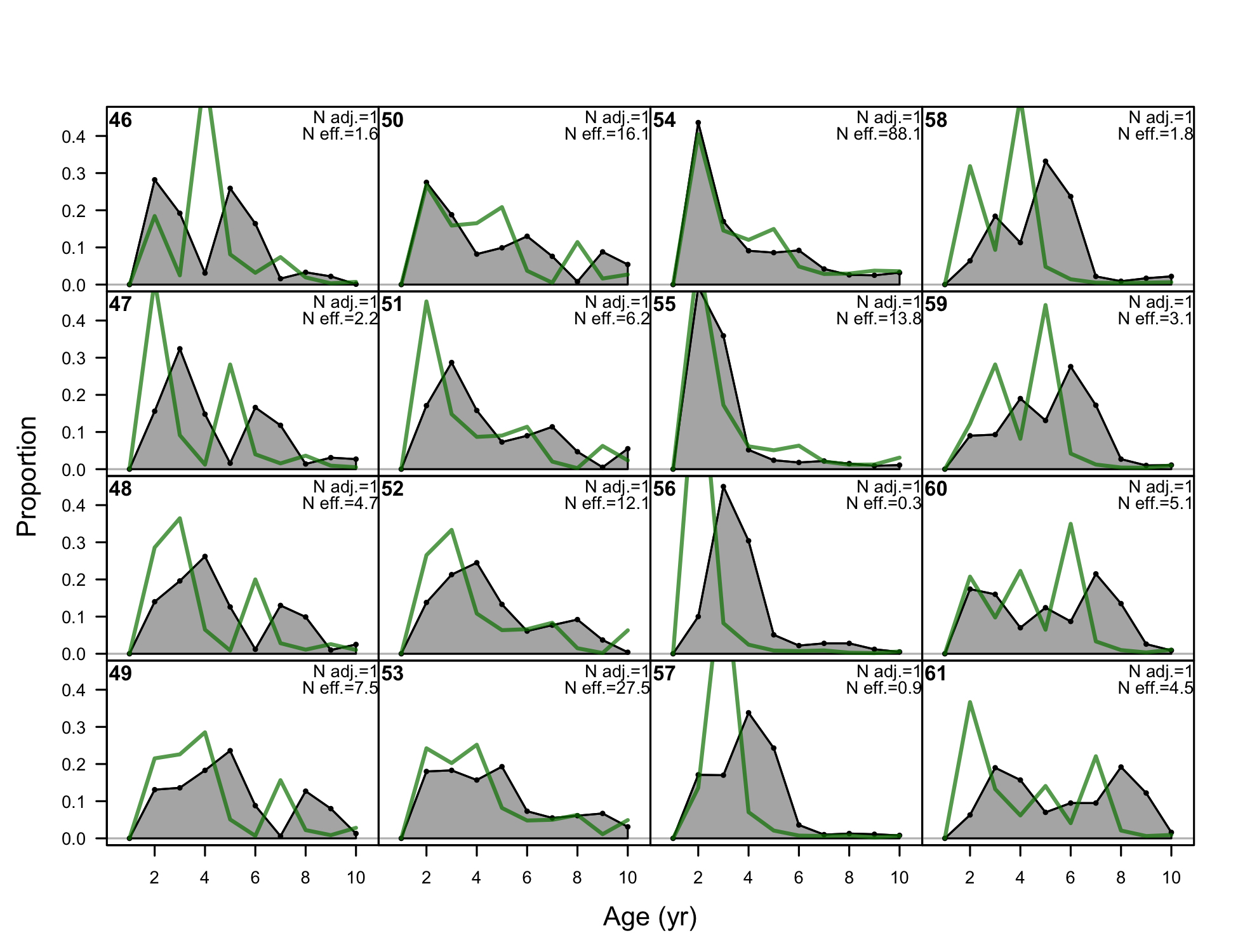
A "sardine" assessment: skill? (proof of concept)
Biomass
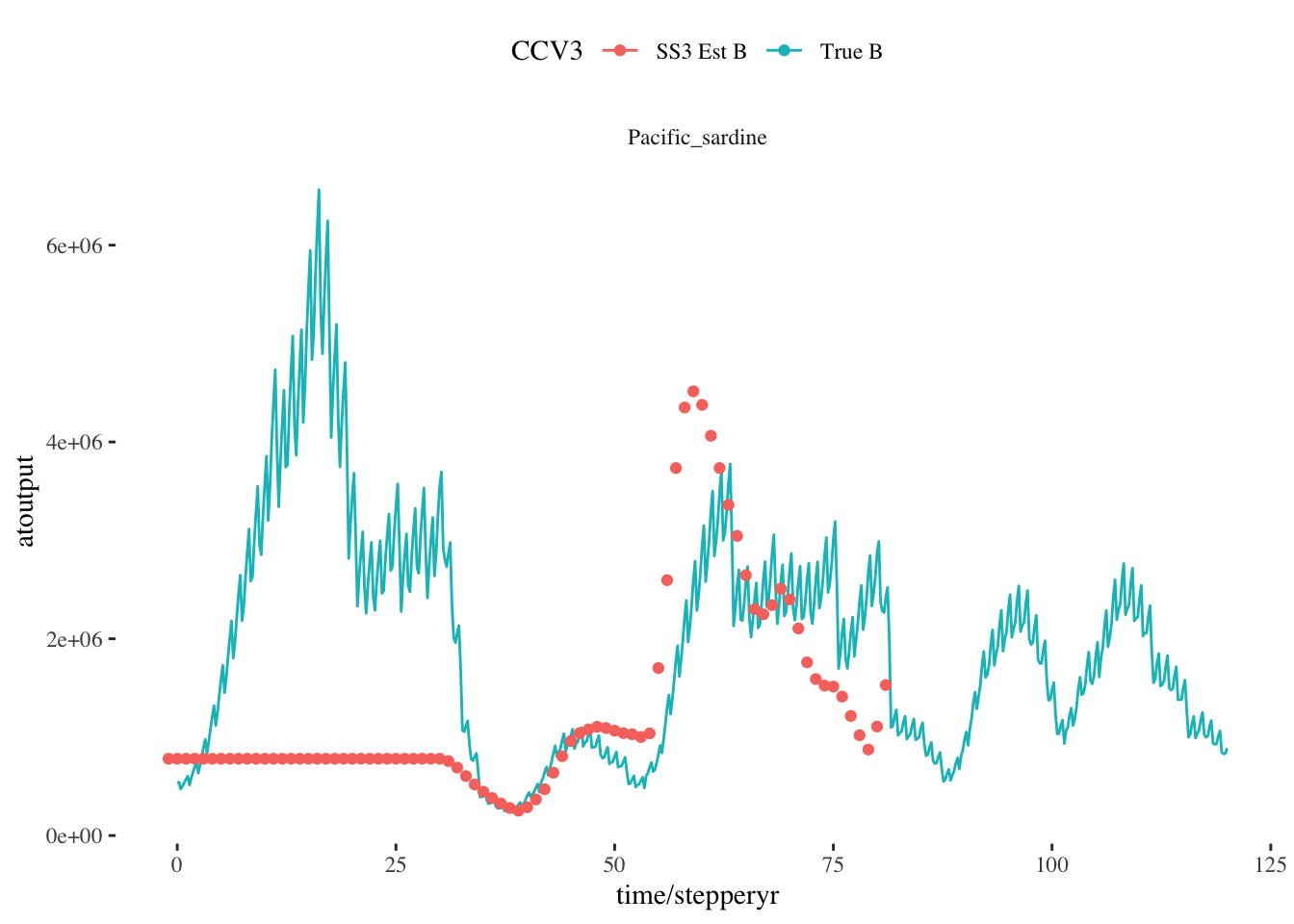 Fishing mortality
Fishing mortality
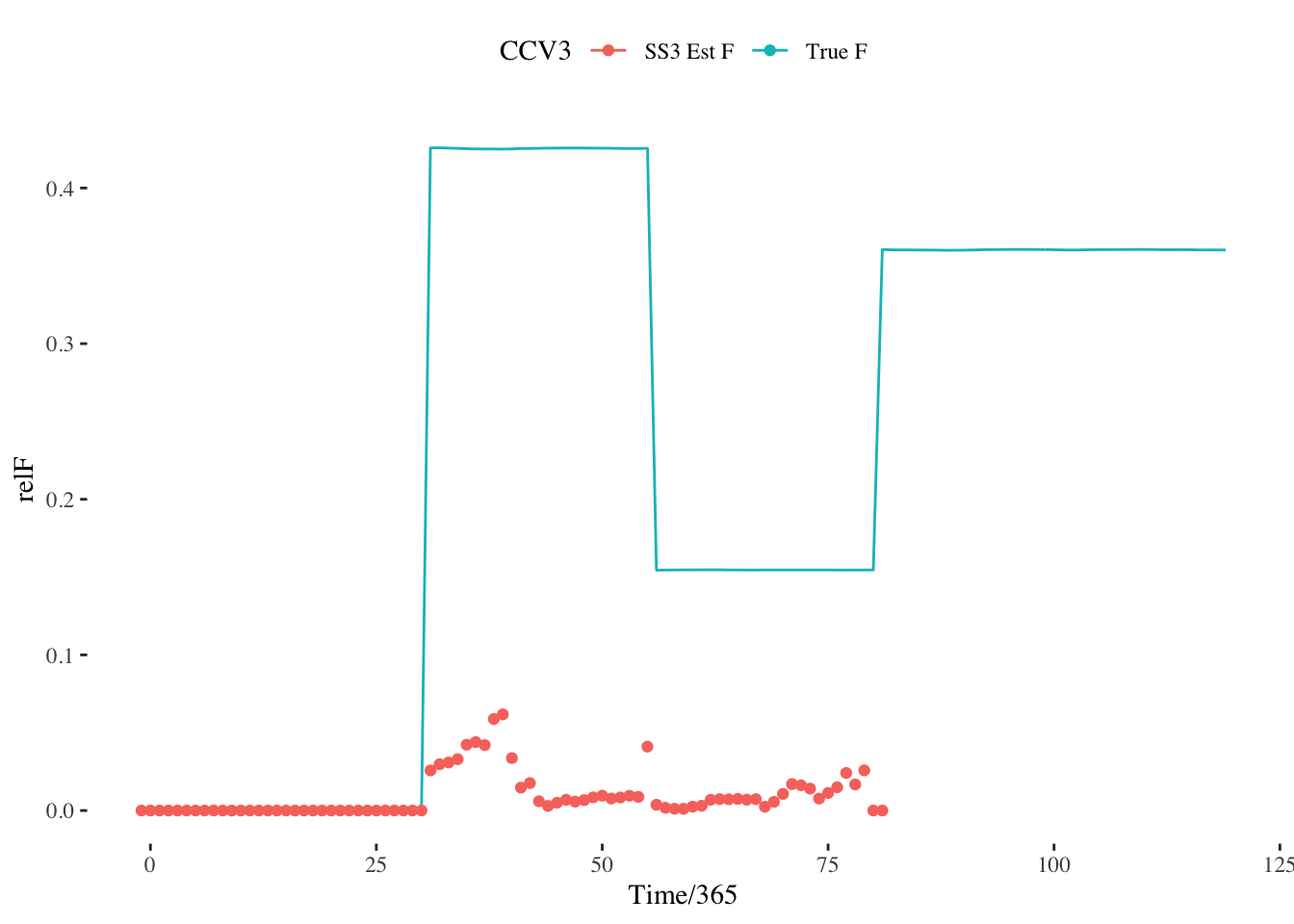
Recruitment
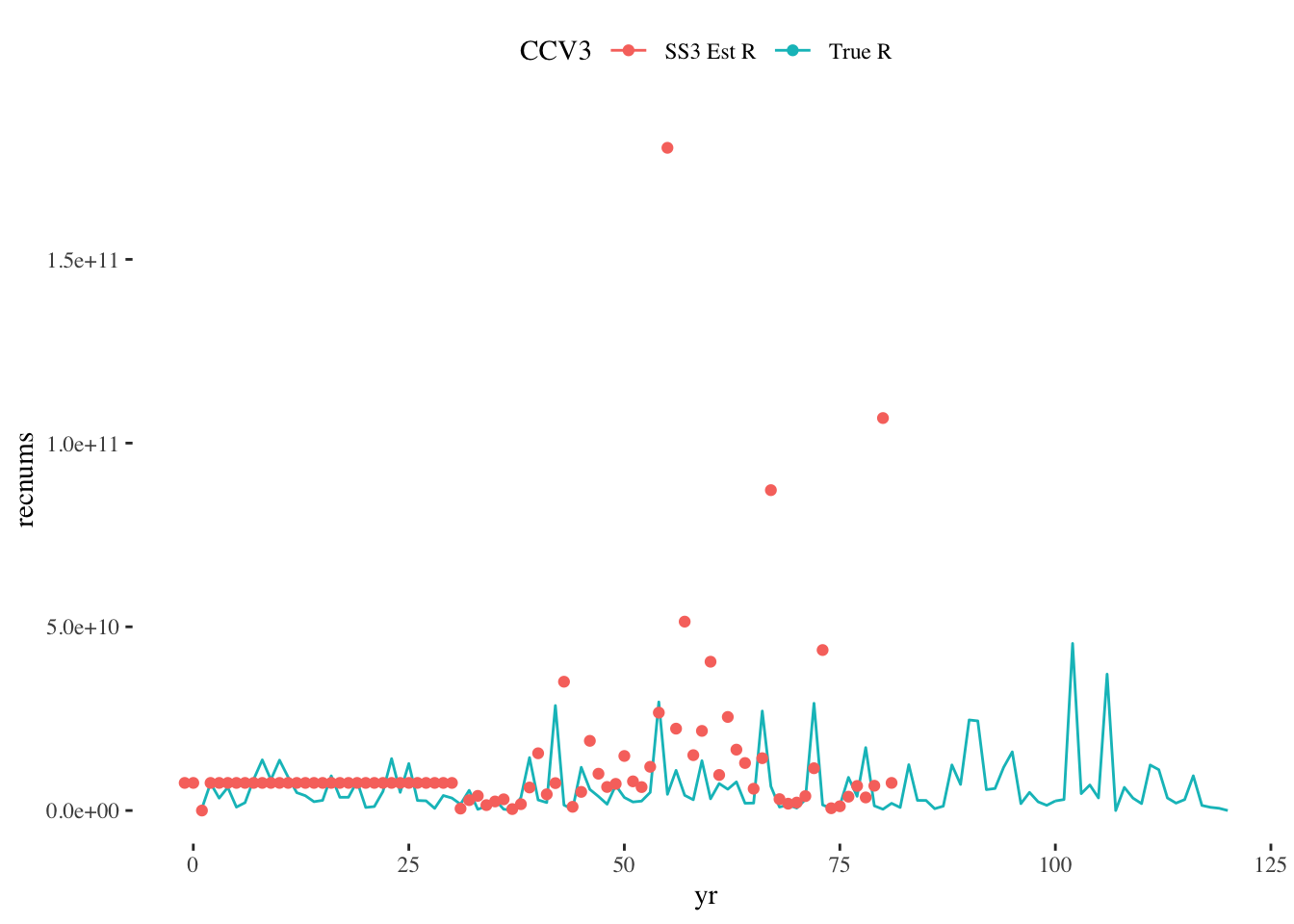
Key: True SS3 estimate
Full disclosure!
Still working on:
Functions for older Atlantis codebases (i.e., CCA model)
Splitting aggregate age groups into true ages
Interpolating aggregate age groups weight at age for true ages
Fishery catch weight by area
Wrapper functions to generate data in fewer steps
Automated skill assessment functions
Inputs for models other than Stock Synthesis

Specify uncertainty in assessment "data": What Would Poseidon Do?
What level of uncertainty is appropriate to carry through these analyses?
Biological:
- appropriate sigma-R?
Survey specification:
timing and spatial coverage?
which species are captured?
species-specific survey efficiency ("q")?
selectivity at age for each species?
Survey uncertainty:
additional observation error (survey cv for index)?
effective sample size for biological samples?
Fishery uncertainty:
additional observation error (catch cv for total)?
catch sampled for length/age in all areas?
effective sample size for biological samples?
